Luxembourg is a tiny country in the heart of central Europe, wedged between Belgium, France, and Germany. With a history dating back to Roman times, this diminutive nation has punched above its weight over the course of history – witnessing the rise and fall of empires in medieval Europe, playing its part in both World Wars (General Patton is buried here), and more recently as a founding member of the European Union. Luxembourg today is a modern country that boasts one of the highest GDP per capita in the world, a high standard of living, and is a global financial powerhouse. Beyond the main city, its unique topography of lush valleys, rolling forested hills, and an amazing under-the-radar wine country help provide a picturesque backdrop.
On a recent family trip to Europe, we had the pleasure of spending the better part of a week exploring Luxembourg City and a few of its surrounding areas. With our kiddos we enjoyed exploring the historical caves of Bock Casemates, hunting for a purple mermaid by the Alzette river in the Grund, searching for royalty in Vianden Castle, and wine/juice tasting in the Moselle valley wine region. Here are our suggestions for how to delve into the historical roots, diverse terrain, and food & wine culture of this tiny yet captivating country.

Ready to explore! Since 2020 public transport is completely free throughout Luxembourg
1. Relive the city’s historical roots at the Bock Casemates
To understand the history of Luxembourg city and the country itself, a visit to the Bock is a must and the best place to start. The Bock Casemates is Luxembourg’s most famous and popular attraction, and also a UNESCO World Heritage site along with the historical old town. This is where in 963AD Count Siegfried of the Ardennes purchased a Roman castle that stood on the Bock promontory, and built a fortress there in order to protect his vast surrounding lands. The name Luxembourg is actually derived from the name of the original castle which was called Lucilinburhuc (“Little Fortress”).
Over the course of the following centuries various groups from Spain, Austria, France and Germany staked their claim to the Duchy of Luxembourg and contributed to expanding and solidifying the defenses of the fortifications that became the Bock Casemates. Their goal was to erect a formidable fortress stronghold in Western Europe, and the Bock within Luxembourg was of great strategic importance given its location on the French-German border. No wonder that the Bock came to be known as the “Gibraltar of the North”. Eventually though, the majority of the fortress was brought down in the late 19th century as part of treaties to prevent further conflicts, and the Bock Casemates and its extensive underground tunnels are all that remain today. Through all the foreign invasions and annexations, the people of Luxembourg have kept their strong nationalistic sentiment, evident in the Official motto – “we want to remain what we are”.
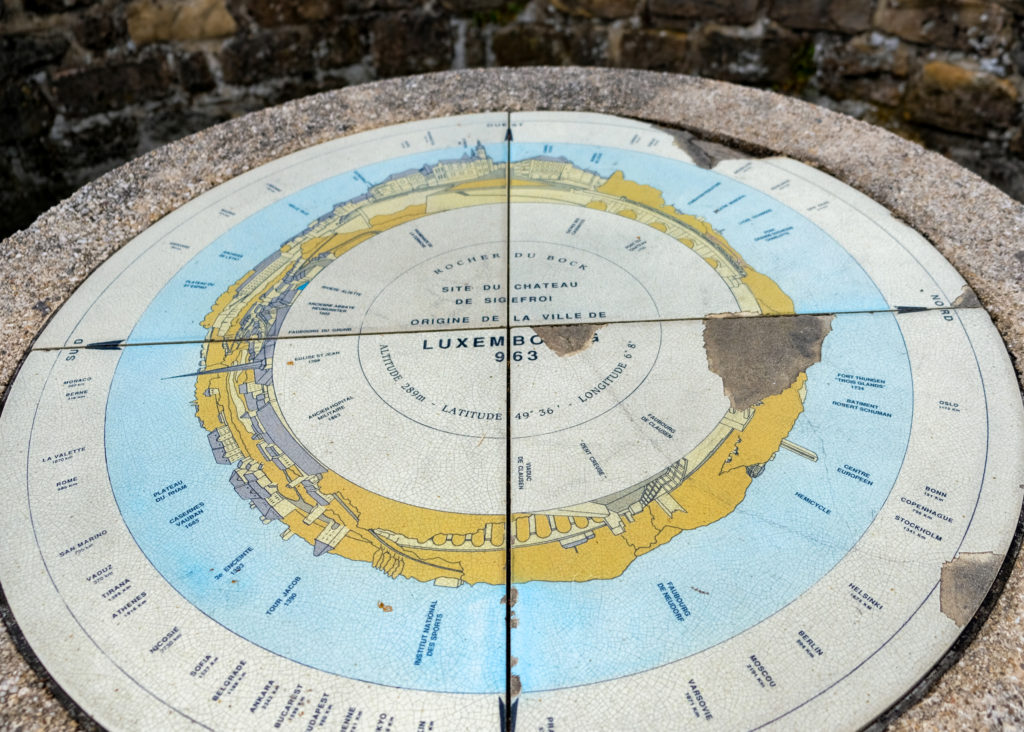
Stone plaque marking the spot of the original castle
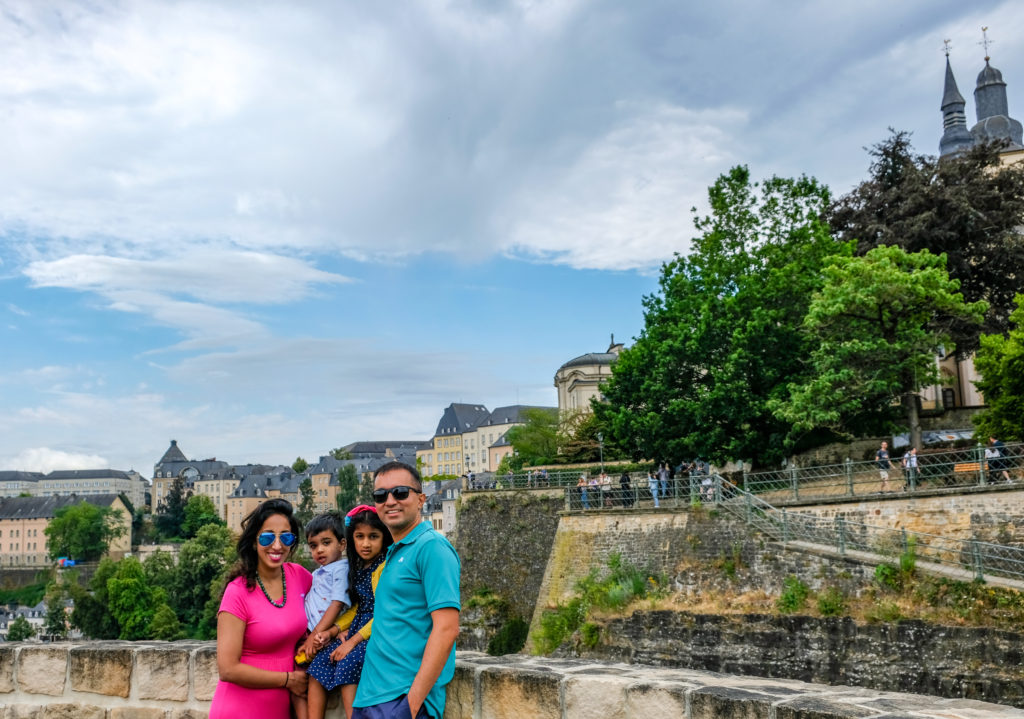
Sweeping views of the upper old town
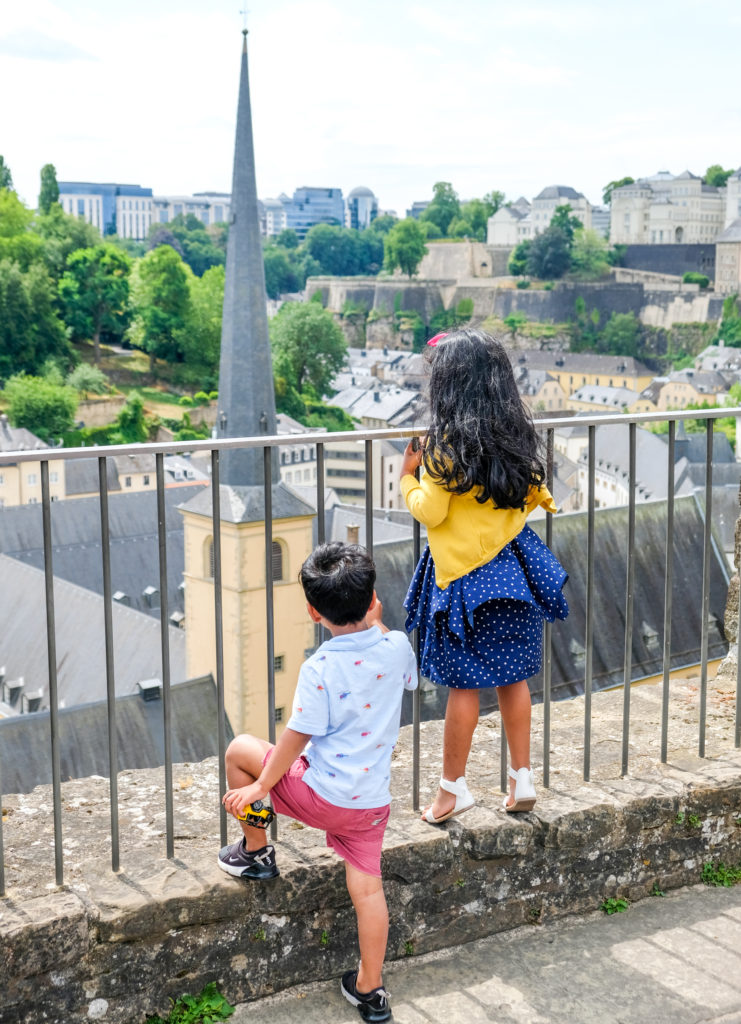
Looking down on the Grund area of lower old town
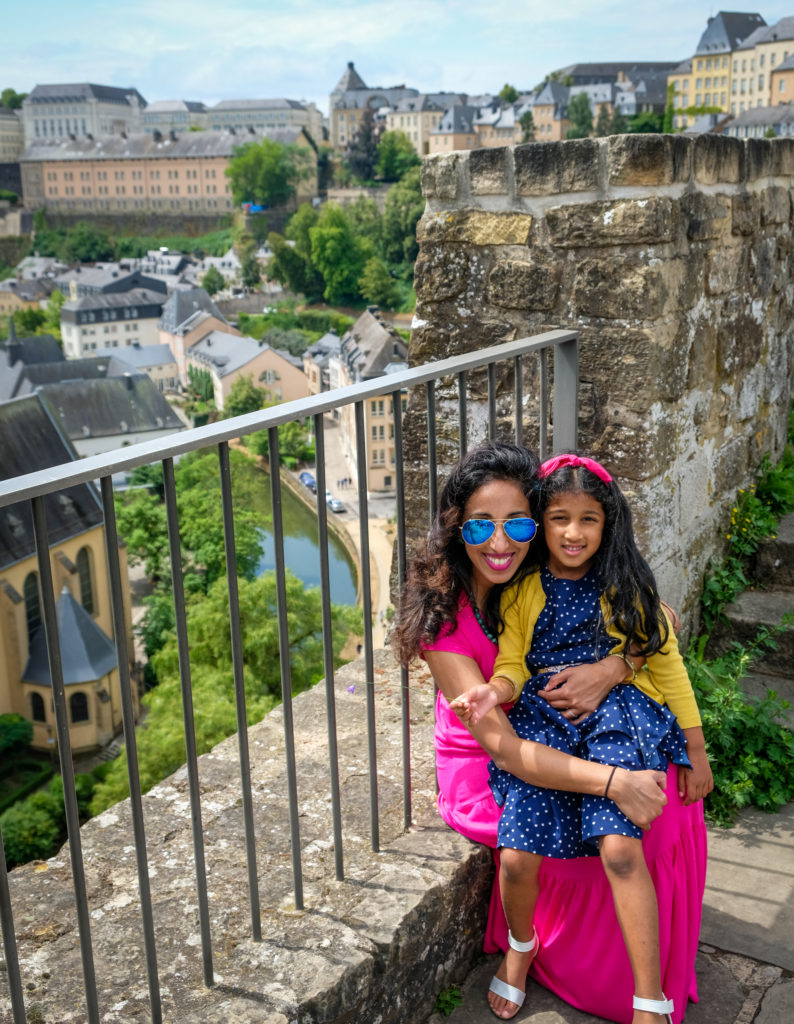
Mommy daughter pic!
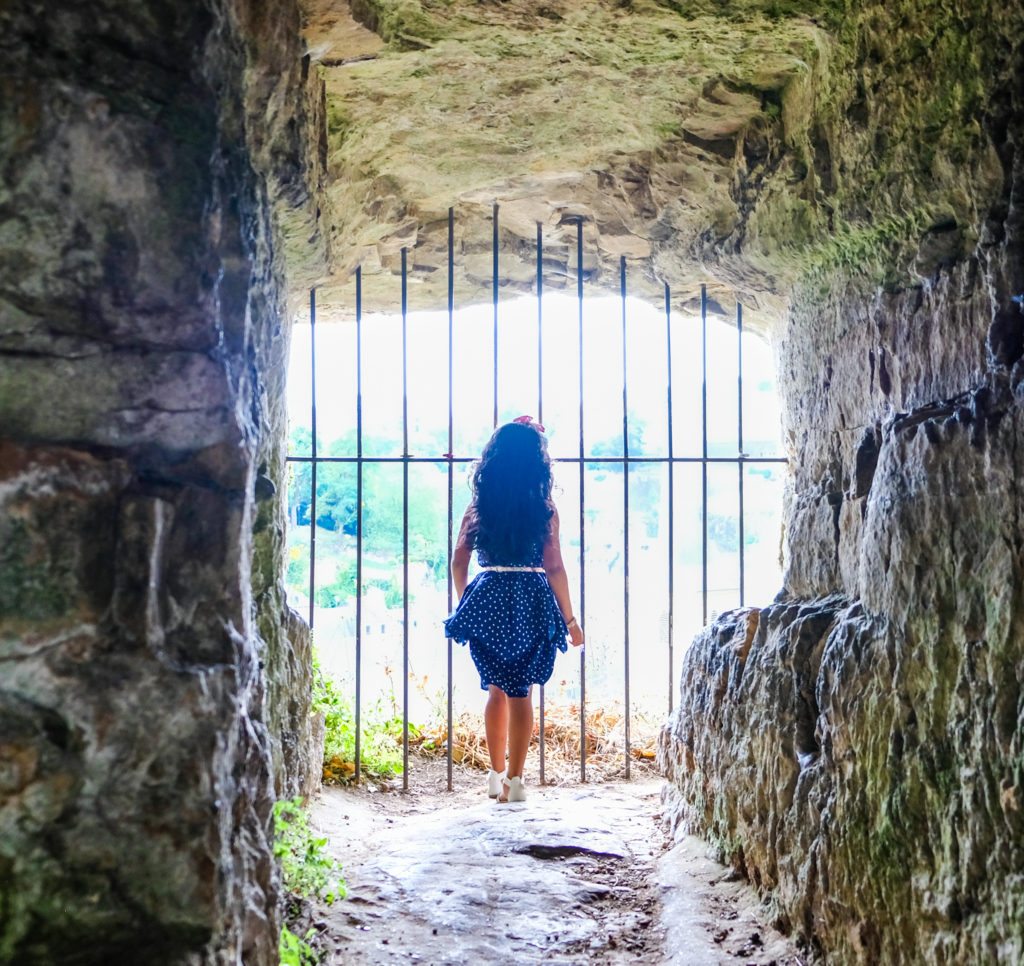
Scoping out one of the surviving cave lookouts
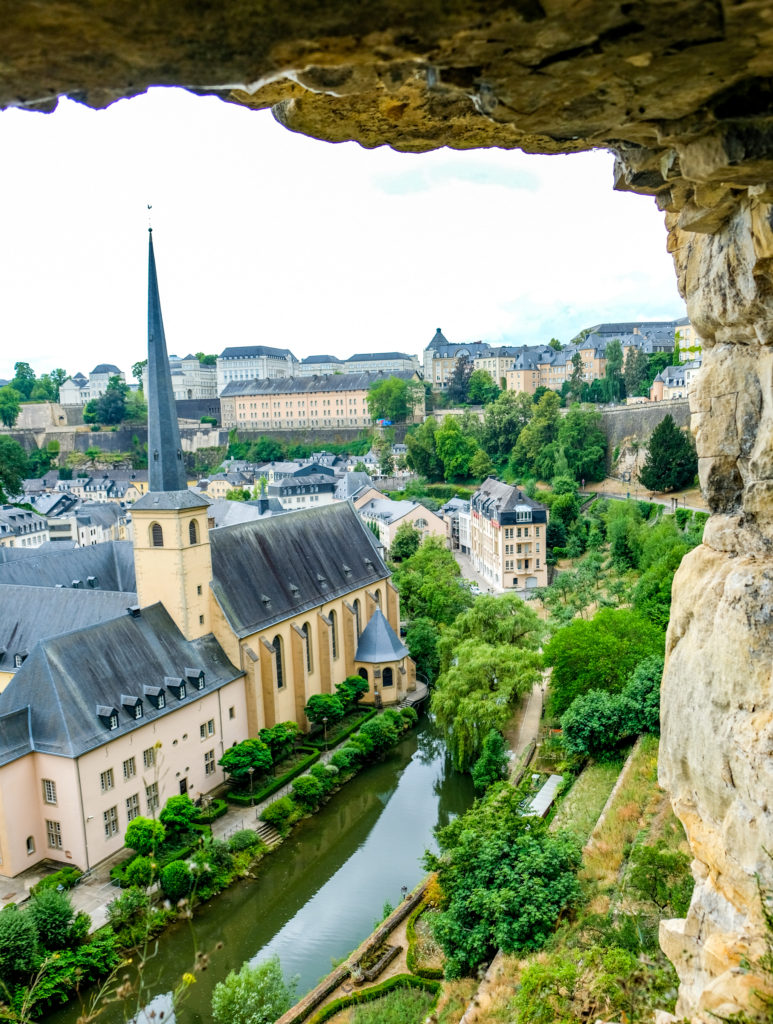
Views of the Grund and Alzette river down below from the caves of Bock Casemates…
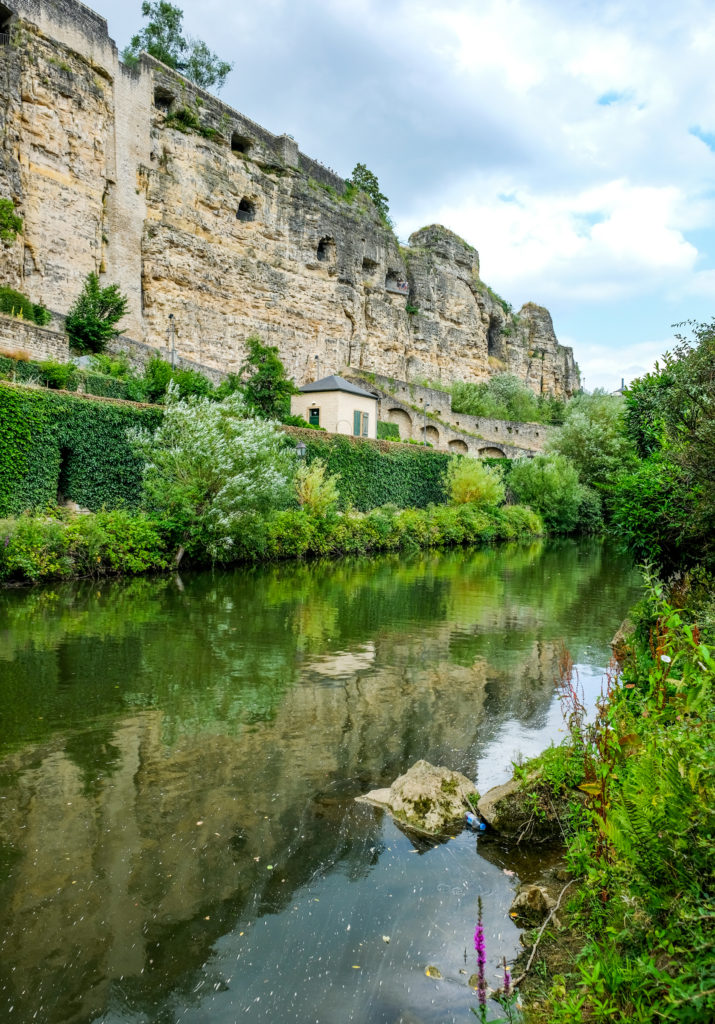
…and corresponding views of the caves from the waters down below
2. Walk along the Chemin de la Corniche for postcard views of Luxembourg City
The best way to enjoy views of both upper and lower cityscapes of the old town, is to walk along the Chemin de La Corniche. This walking path borders the sides of the Bock and the upper town, while offering stunning views of the Alzette valley, the river, and Grund area. The Corniche walkway is often referred to as “the most beautiful balcony of Europe” by locals, and its hard to argue with the breathtaking views of steep cliffs and deep valleys on offer. The walkway can take you all the way down to the Grund level, or you can jump into the elevators that traverse the heights in a matter of seconds. During our stay in Luxembourg we lost count of how may times we took the elevator at the Plateau du Saint-Esprit to switch between upper Ville Haute and the lower Grund areas.
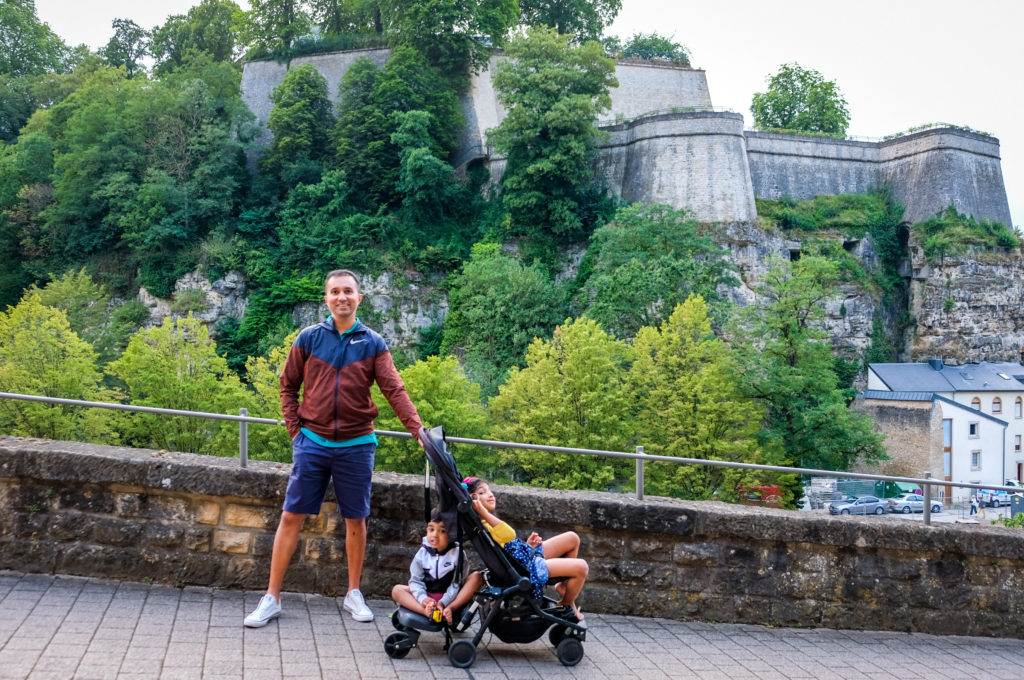
Getting our steps in along the Corniche, with fortress remnants in the background
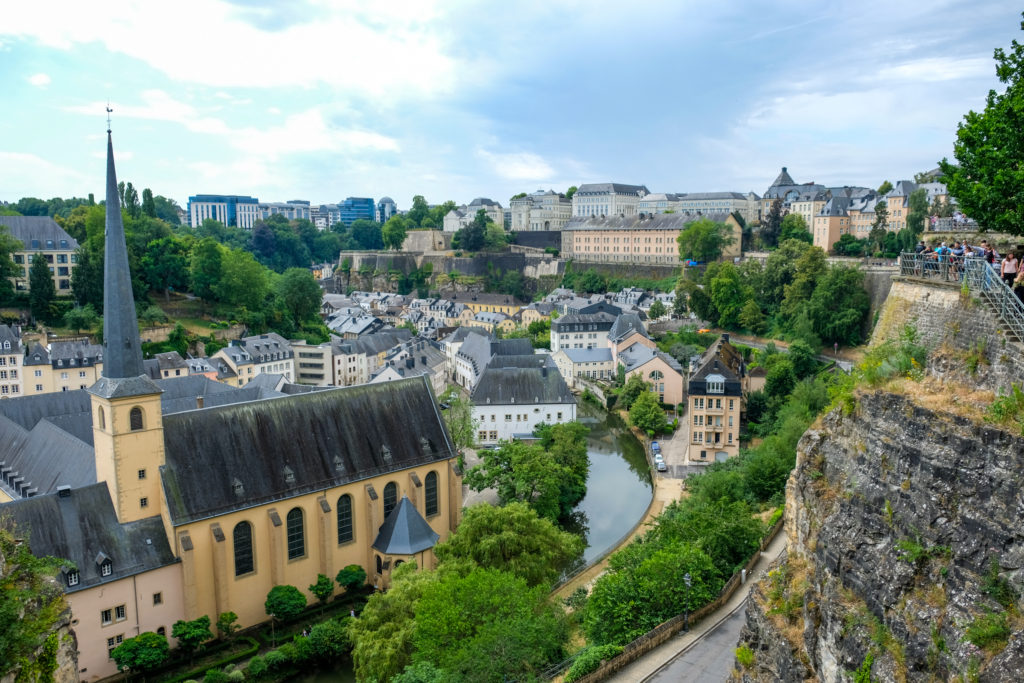
Splendid views of the upper Ville Haute and lower Grund abound along the walkway
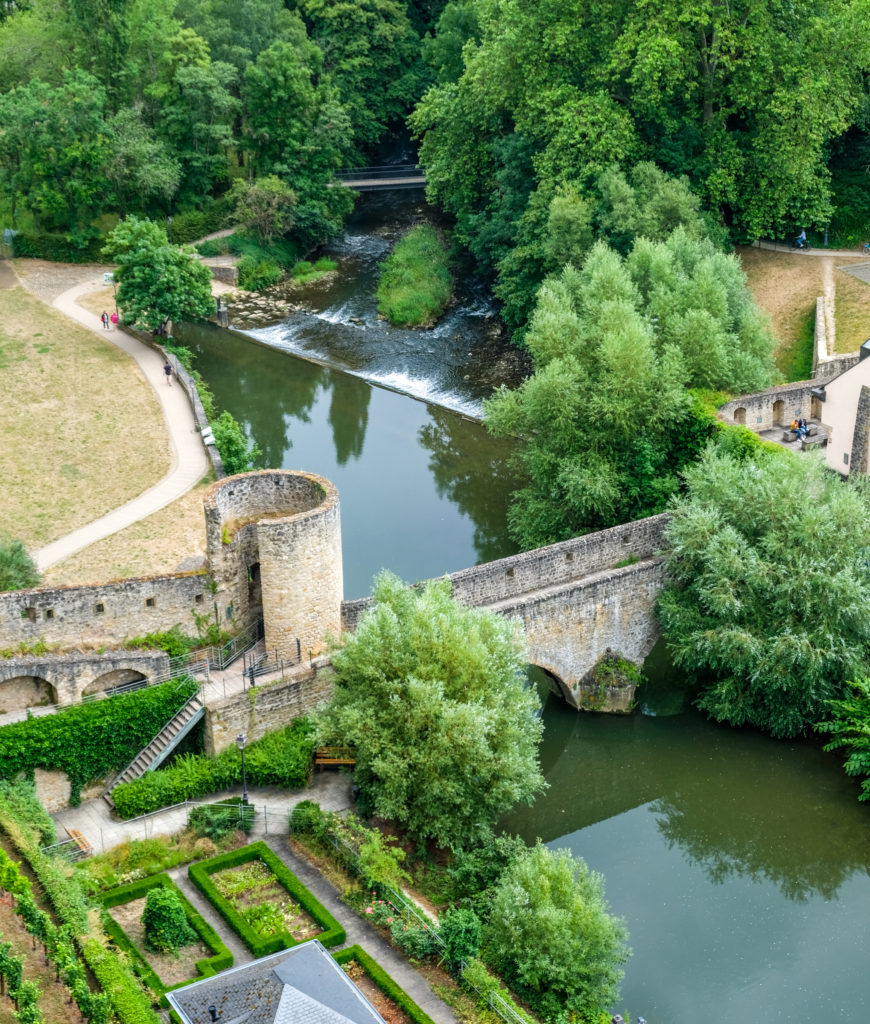
One of the many bridges spanning the Alzette river
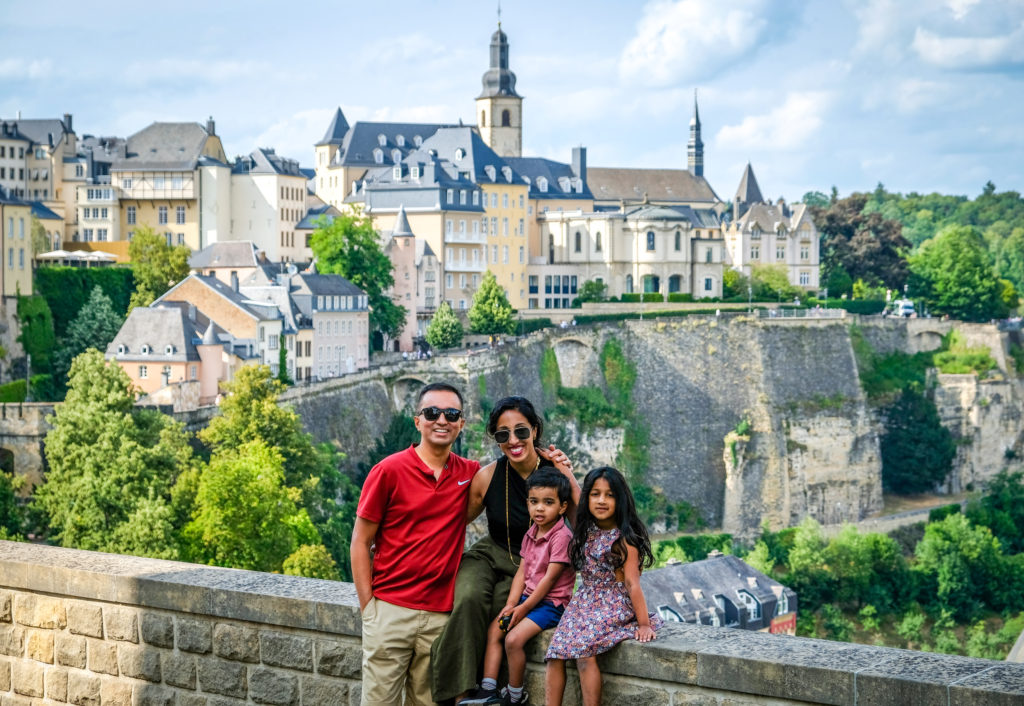
Taking a breather along the Corniche for family pic
3. Soak in the historical sights of the Ville Haute upper old town
Most of the major sights of Luxembourg City are situated within the neighborhood of Ville Haute. The city is extremely walkable, with most of the sights just minutes apart.
The best place to start is at the Grand Ducal Palace in the center of old town, which is the official residence of the Grand Duke and his family. Its origins go back to the early 14th century, and it has since been rebuilt, enlarged, and renovated over the centuries. The House of Luxembourg was one of the most powerful medieval dynasties in the 14th century, with no less than 3 Grand Dukes rising to the rank of Holy Roman Emperor. We were hoping to take the tour to learn more about the history of the Grand Ducal family, but alas it was closed the days we tried.
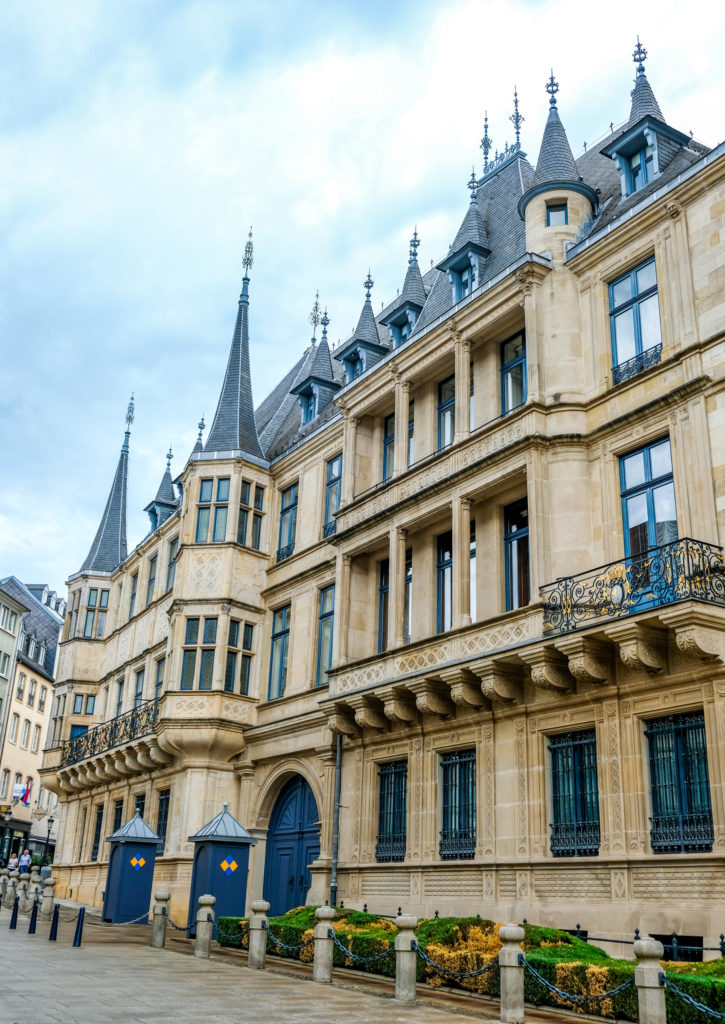
Soaring facade of the Grand Ducal Palace
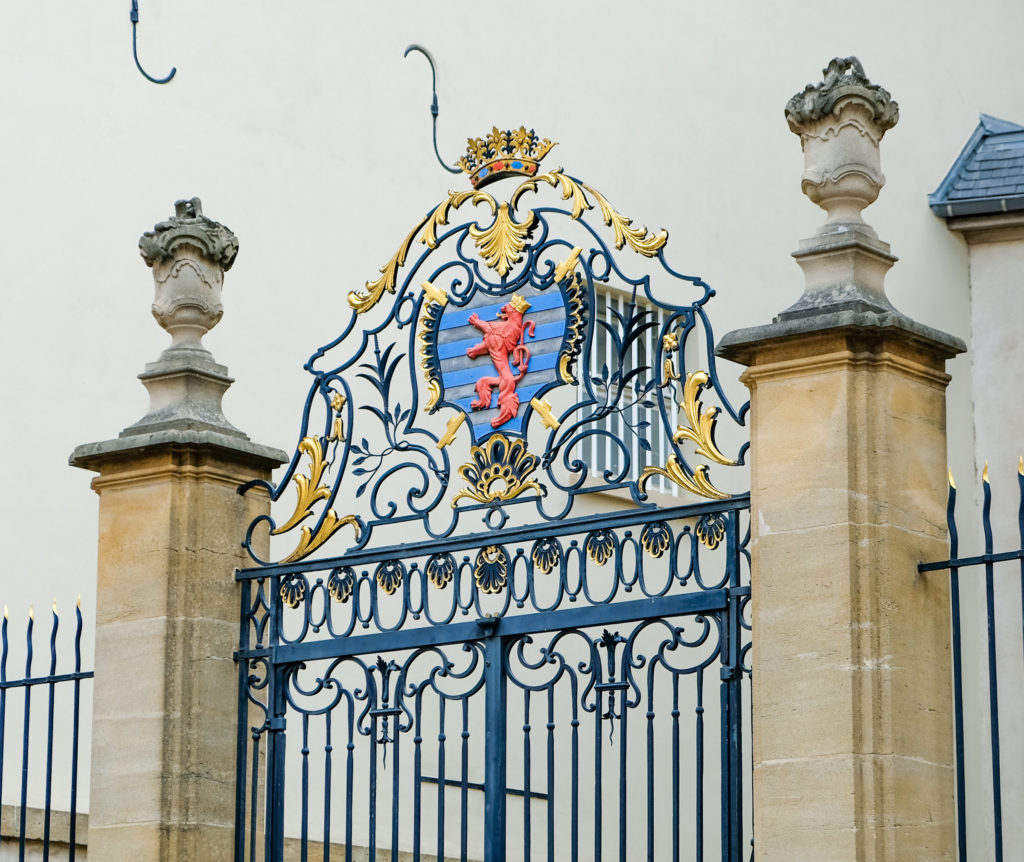
One of the emblems of the Grand Duchy
Its hard to miss the looming structure of the Notre-Dame de Luxembourg Cathedral from anywhere in Ville Haute. Work on the Cathedral started in 1613, and the architecture seemed to borrow heavily from the gothic and renaissance style of its name-sake in Paris. We attended Sunday mass there, which was a mixture of French, German, and Luxembourgish – all accompanied by a melodious Latin choir.
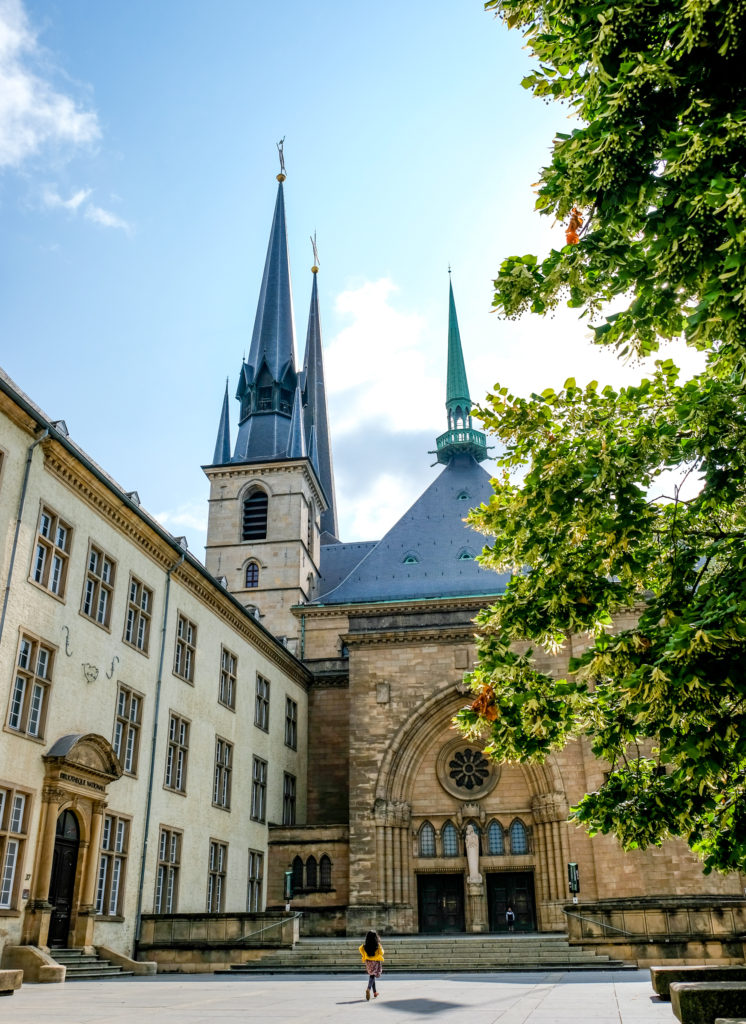
Heading to Notre Dame Cathedral
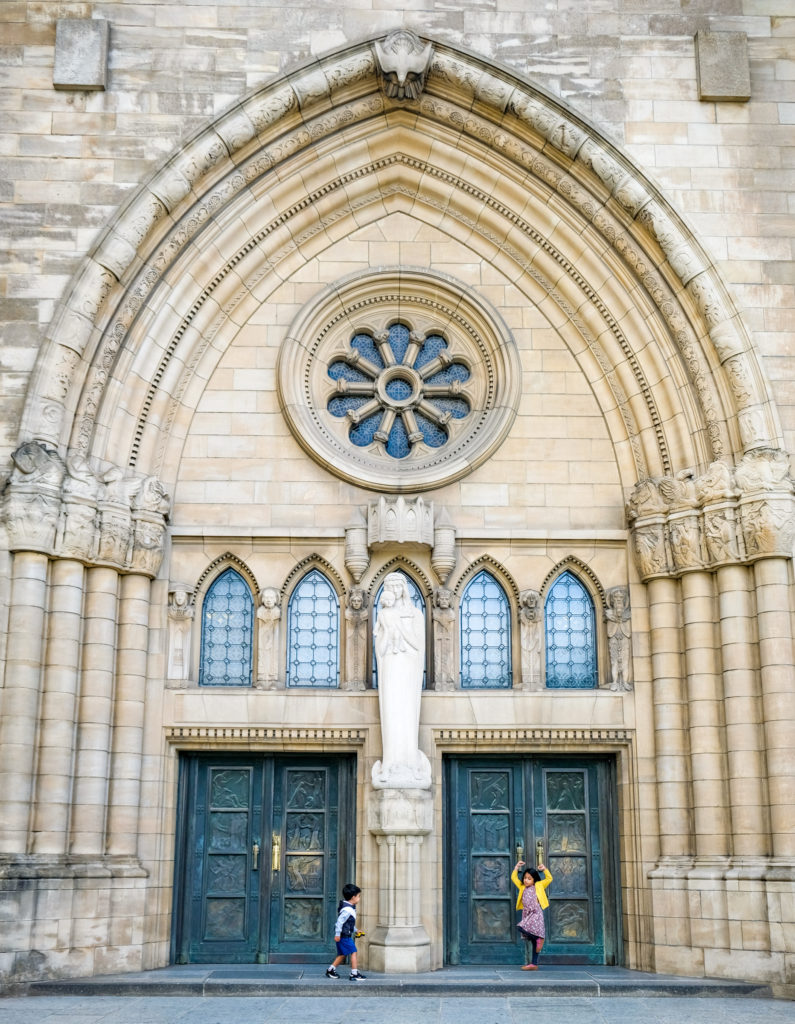
Stretching before mass
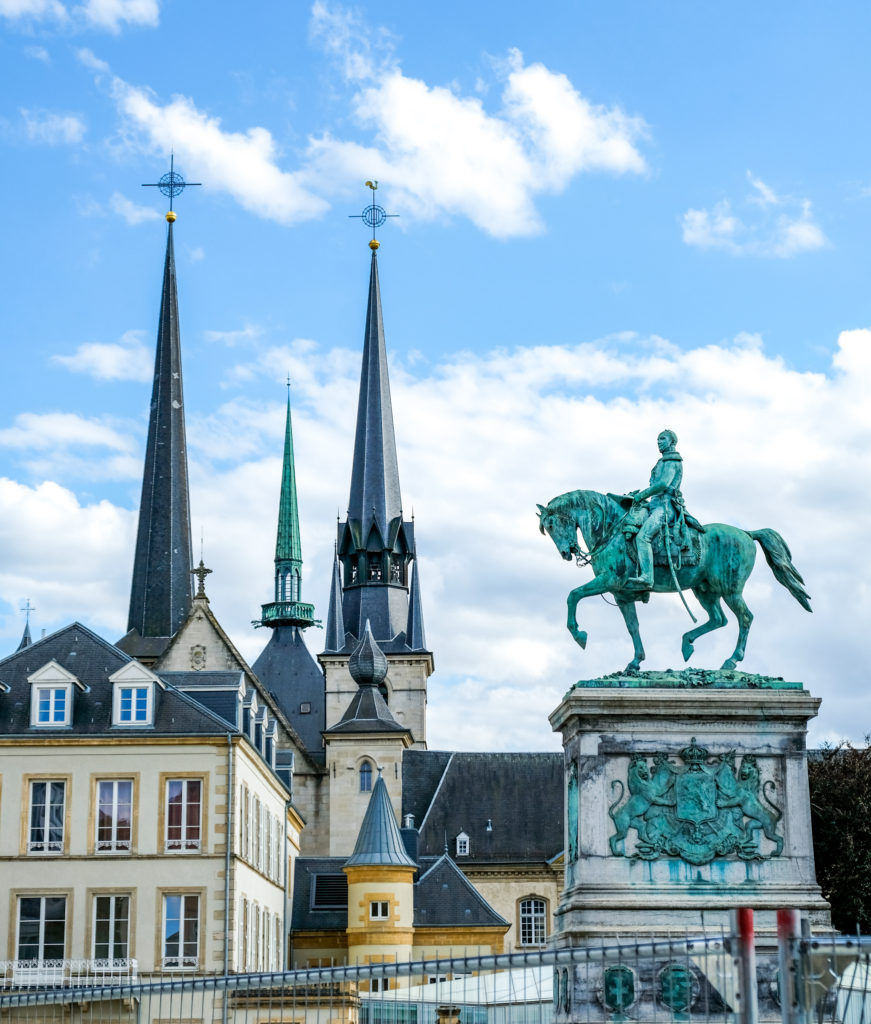
Spires of the church juxtaposed against statue of former Grand Duke Guillaume II
We then walked over to the nearby Place de la Constitution to see the Gëlle Fra war memorial remembering the troops Luxembourg lost in WW1. The monument is a 20m tall obelisk topped by the statue of a golden lady, also known as Gëlle Fra, and she shone for us like a beacon in the summer sun. There are a couple of bronze statues at the base of the obelisk representing a fallen soldier and his comrade.
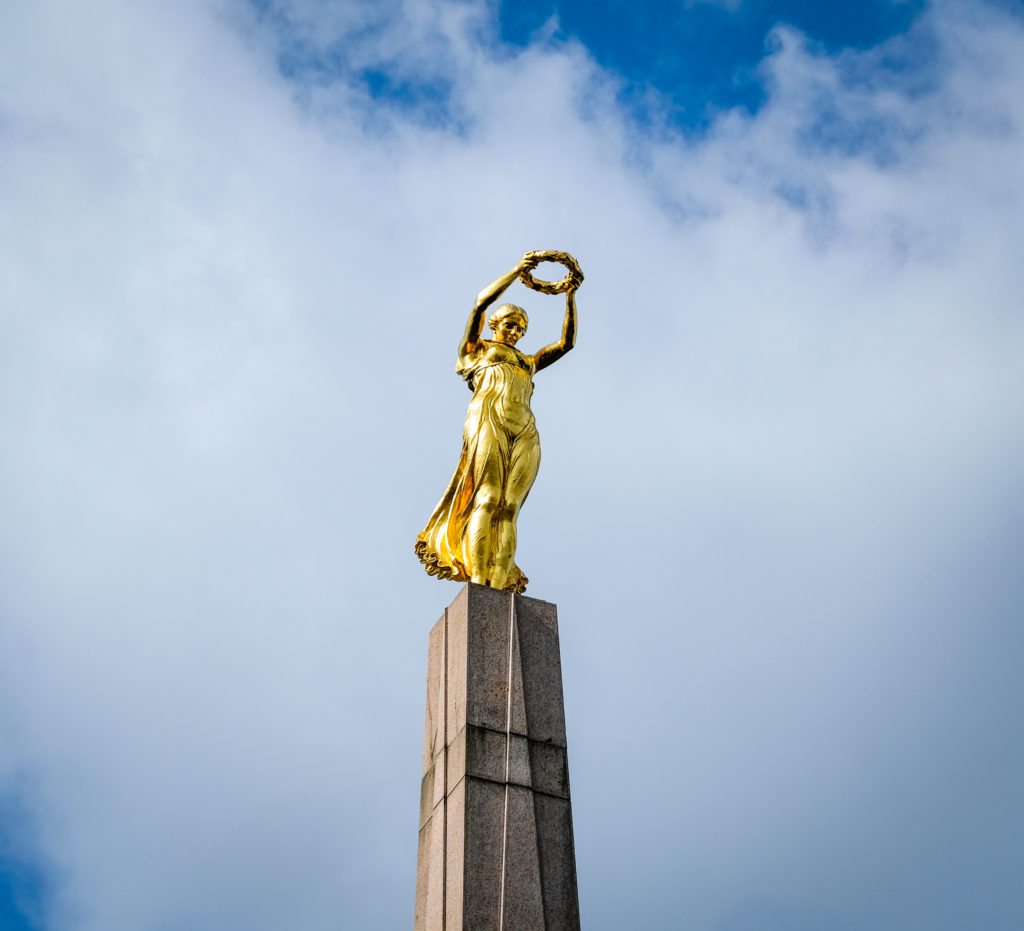
Gelle Fra glowing over the city
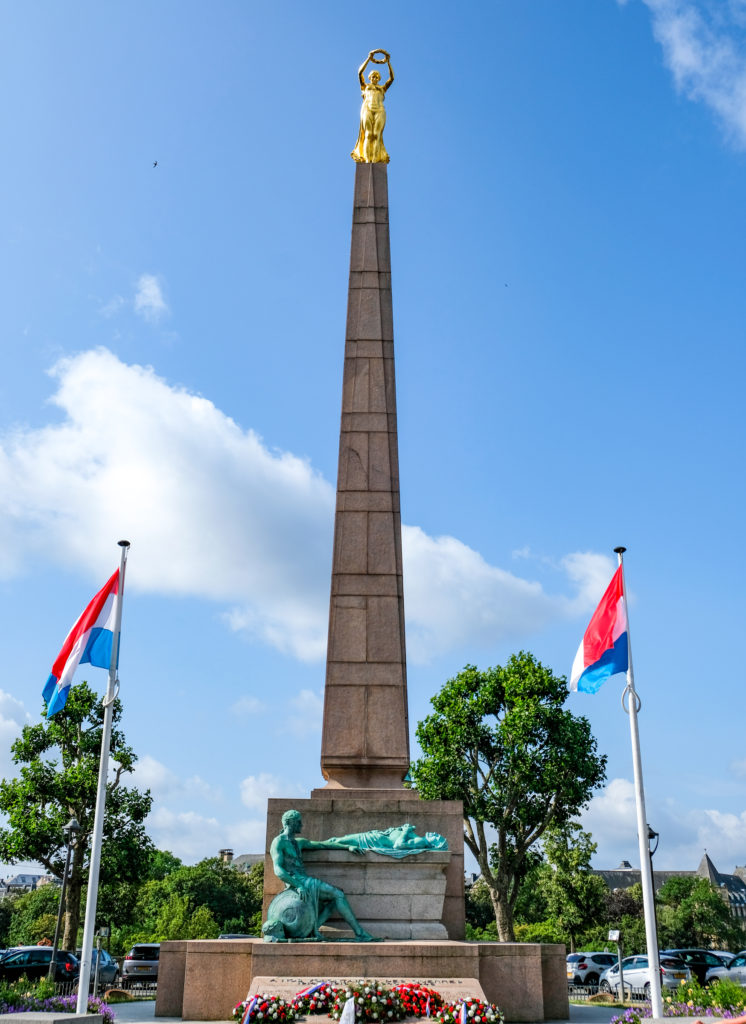
The full monument of remembrance
The kiddos also really enjoyed gallivanting in the Pirate ship within Playground Avenue Monterey. This was just one of the plentiful green spaces and parks we found, and it was just a few mins walk to the west part of the city.
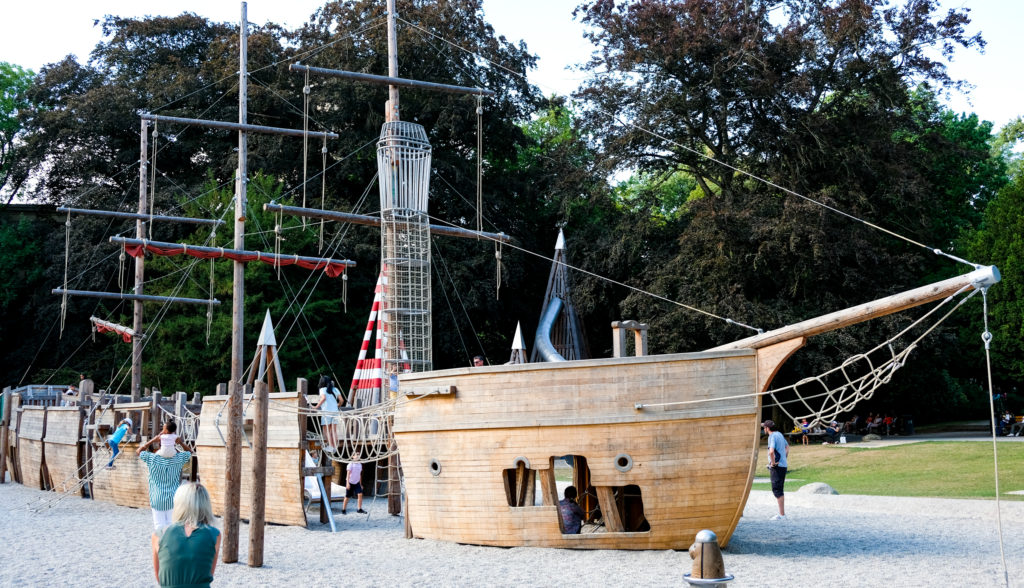
Pirate ship playground!
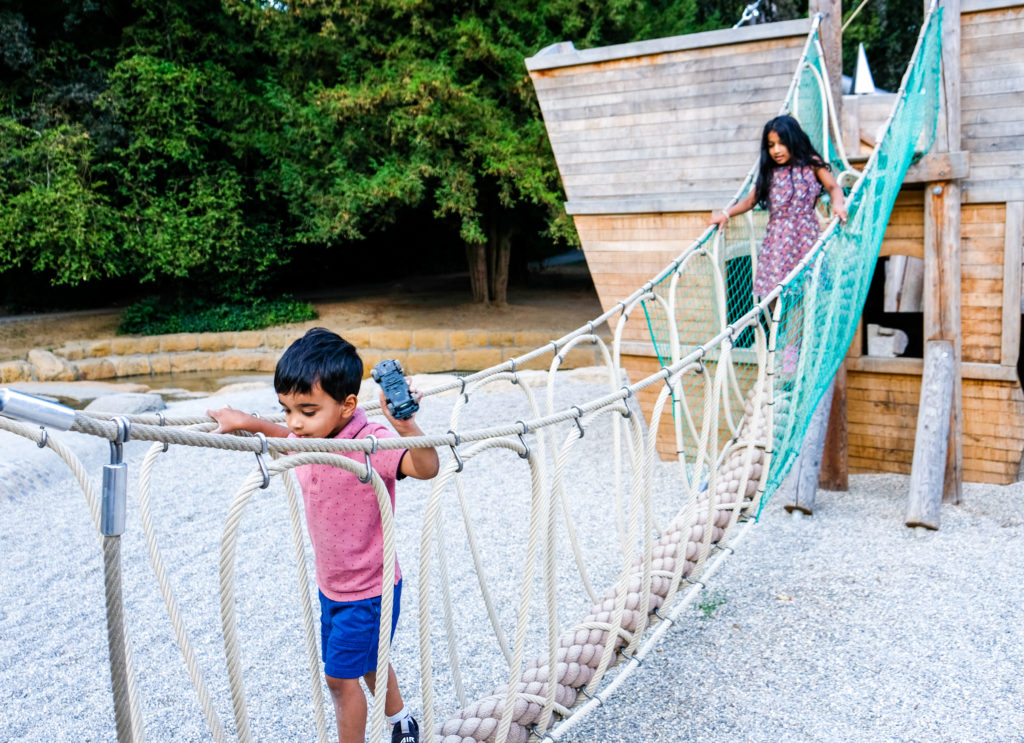
Pirates ahoy!
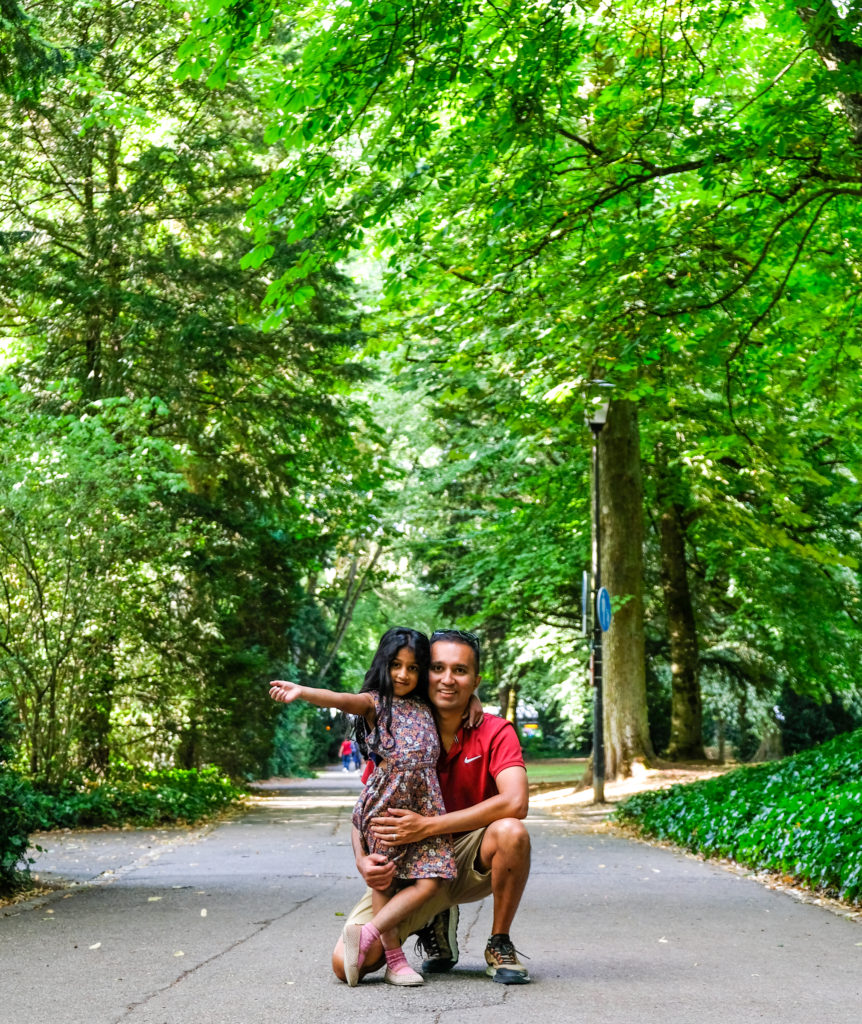
So much greenery in the heart of the city
4. Explore the quaint Grund Area
If you want to get a way from the hustle and bustle of Ville Haute and crave a more laidback scene, then the Grund is the perfect antidote. The Grund is the lower level of old town, nestled at the bottom of the Alzette valley and boxed in by sheer cliffs on either side. It has an almost quaint little village feel with its narrow cobblestoned streets, all just minutes away from the city life of Ville Haute. We spent a few afternoons walking along the banks of the slow moving Alzette river, taking in views that were framed by languid tree branches extending down to the water.
We also came upon the Purple Mermaid statue which harkens to the legend of Melusina, the nymph of the Alzette. She was supposedly a mermaid who took on human form and married Count Siegfried. But after Siegfried reneged on a promise to leave her alone once a month and his curiosity got the better of him, Melusina had to revert back to her nymph form and return to the Alzette river.
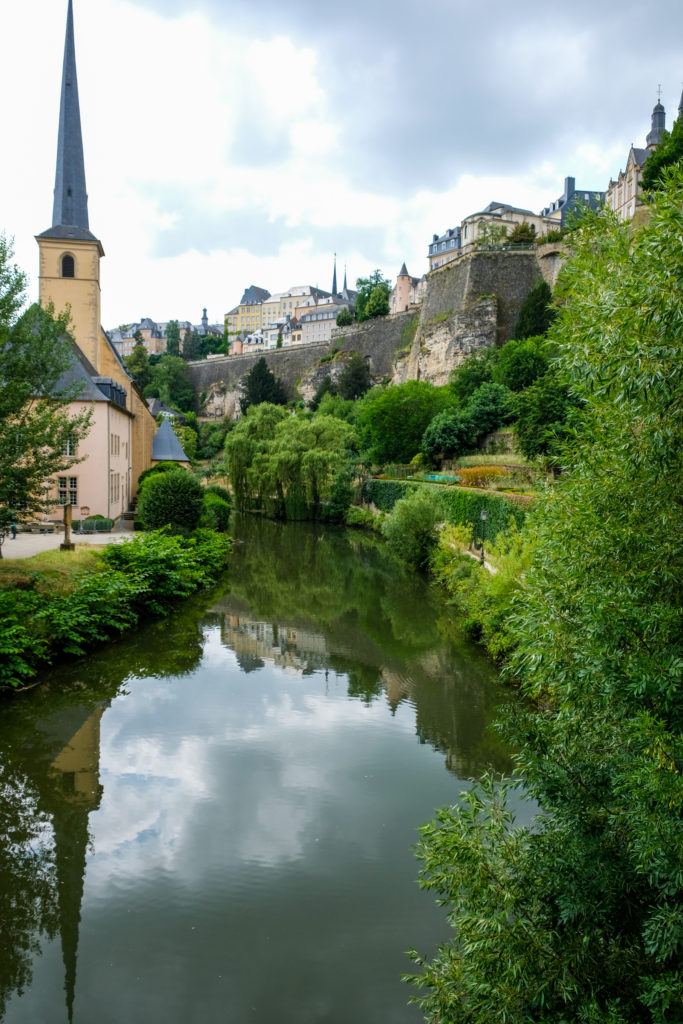
The Alzette river winding through the Grund
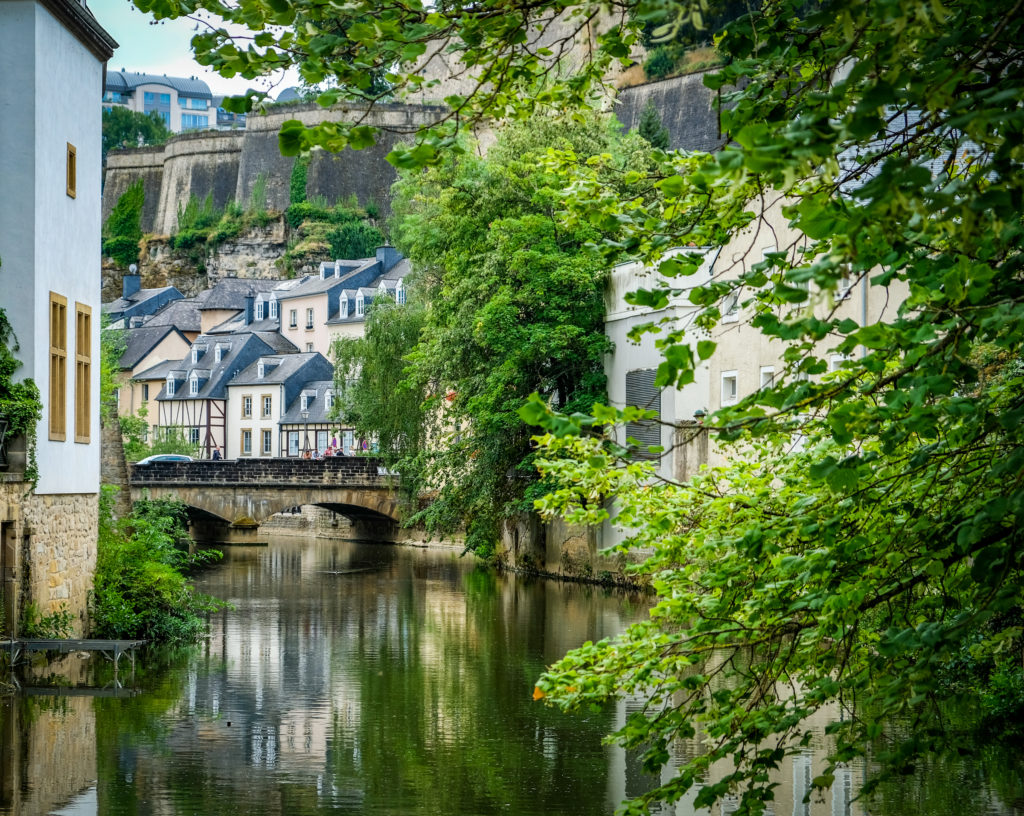
Idyllic views along the river
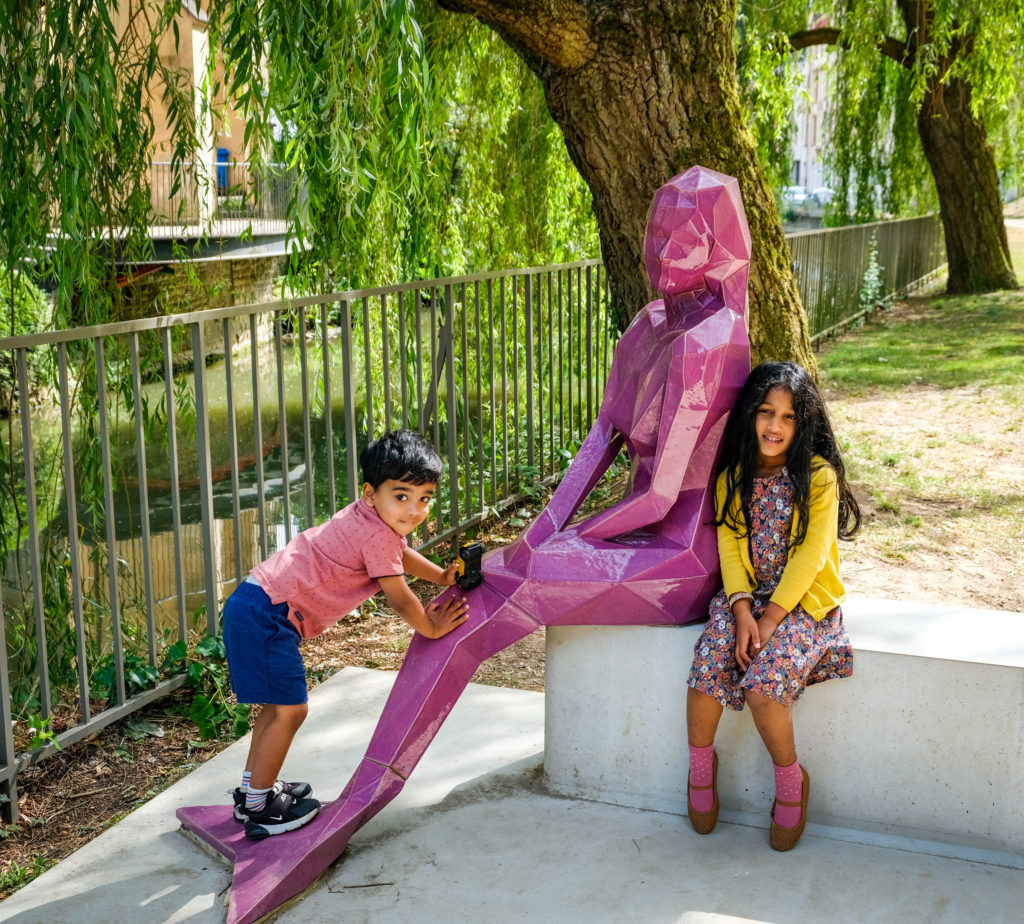
Found Melusina the purple mermaid!
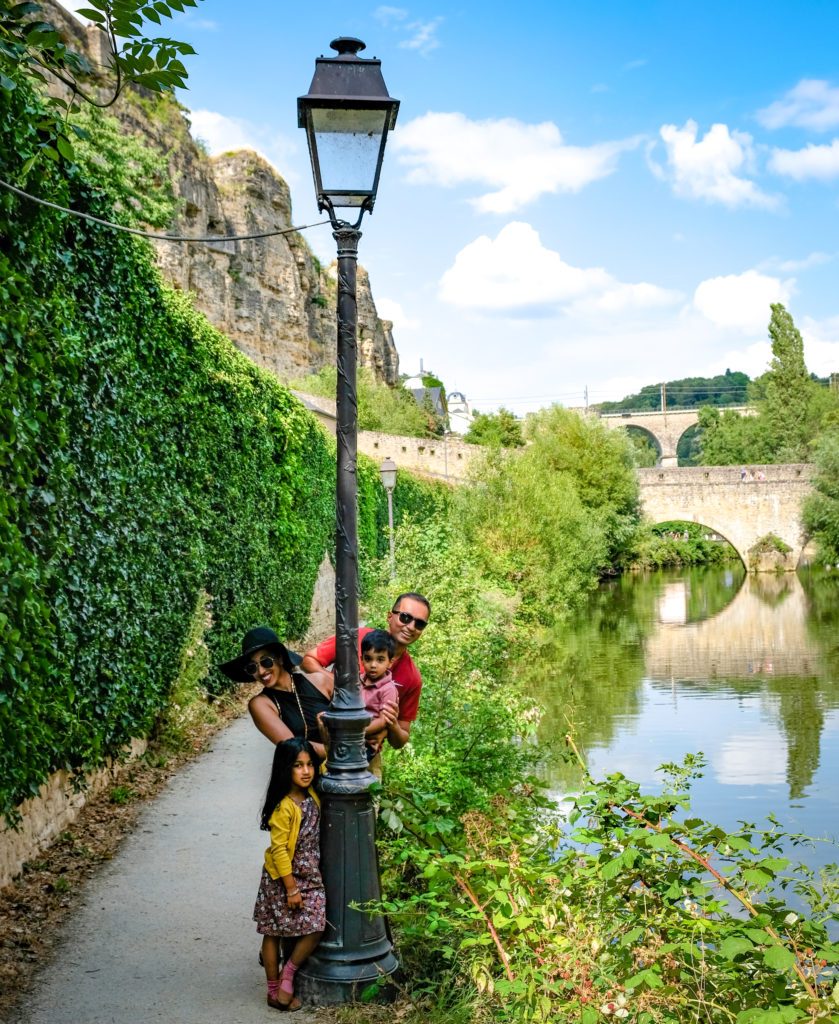
Say cheese for a cheesy pose
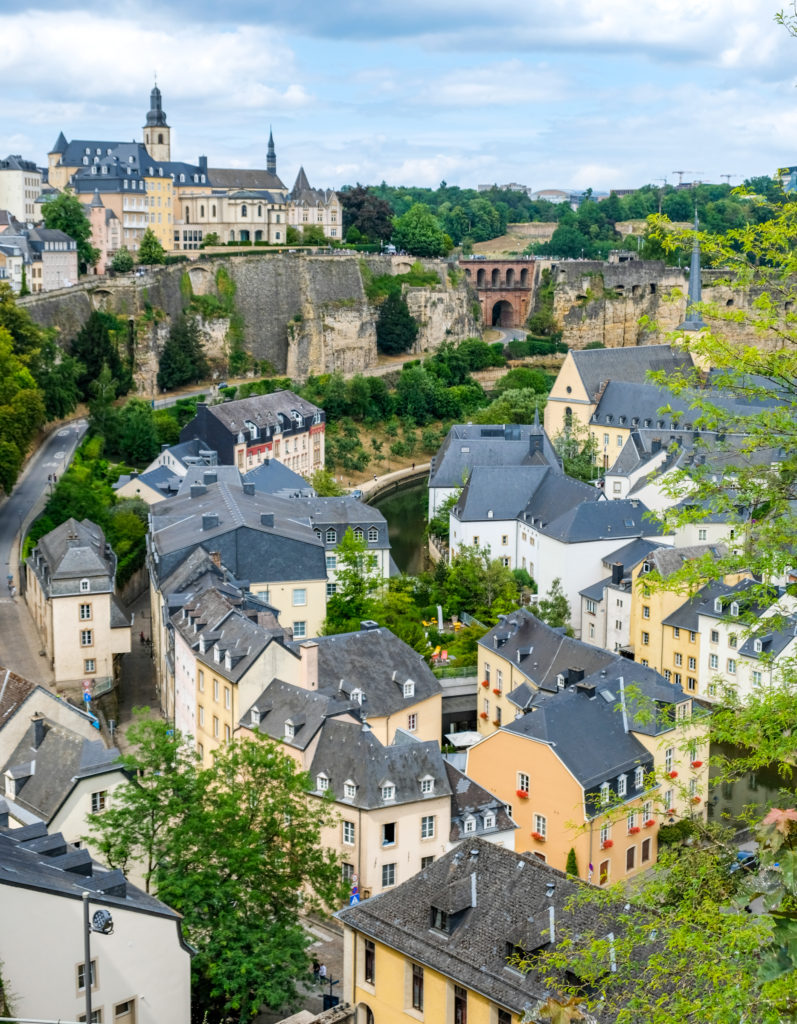
View of the Grund from Ville Haute
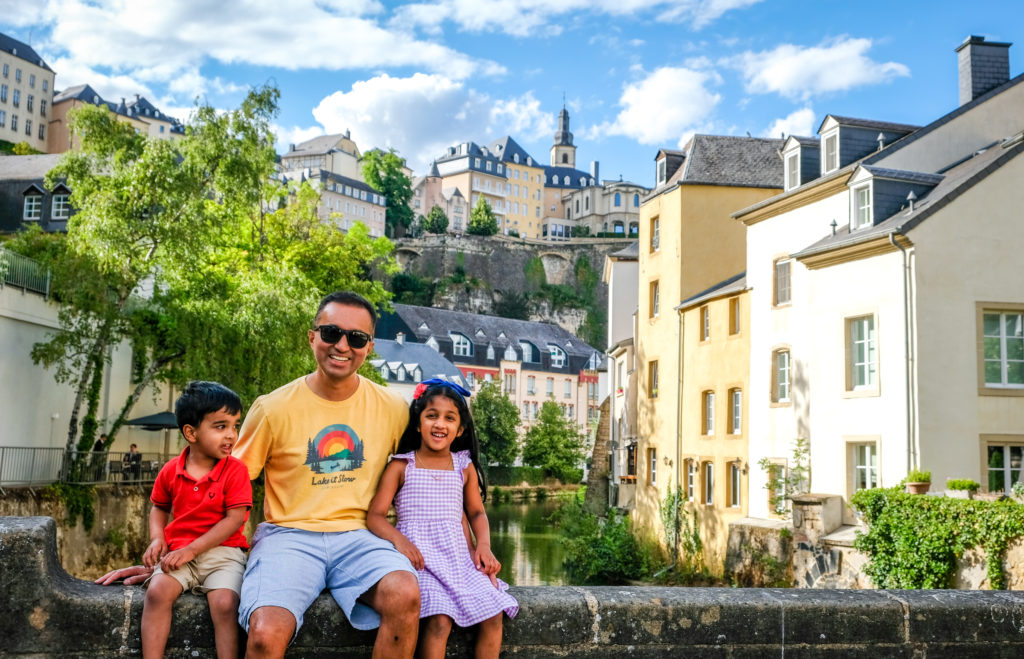
On one of the many bridges in the Grund
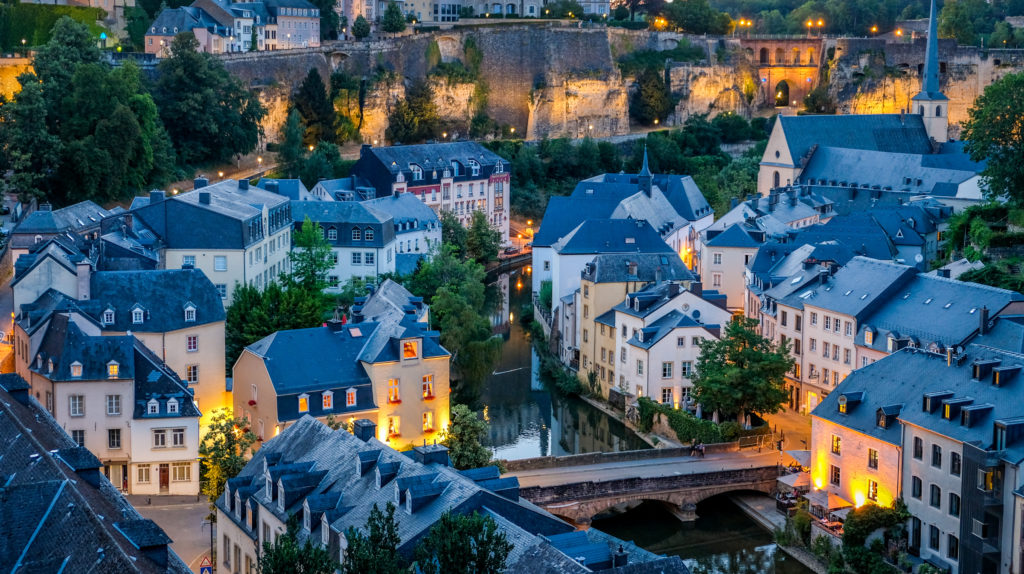
The Grund basking in the glow of dusk
5. Take a day trip to visit the fairytale castle in Vianden
To get a feel of the rest of the country, we rented a car and drove up north into the Ardennes region to see Vianden Castle. Although now a peaceful verdant region characterized by rolling hills and fertile plains and forests, this are was also the scene of the bloody Battle of the Bulge – the last ditch effort by Nazi Germany to thwart Allied forces in Dec 1944. Although General Patton eventually led the Allied forces to victory, it was at the cost of ~30 thousand US forces killed or missing – the bloodiest battle of World War II for US forces.
As we neared the town of Vianden, its imposing medieval castle loomed in the distance even from miles afar. Vianden castle is perched up on a steep hill overseeing its namesake town down below, and is one of the largest castles in Northern Europe. Work on the castle first started in the 11th century, and was eventually completed over a period of 300 years. From the 15th century on when the Duchy of Luxembourg was under the rule of Dutch royal house of Orange-Nassau, the castle was discarded, sold, torn down, rebuilt, left in ruins – before eventually being restored to its current state in the late 20th century.
We spent the morning roaming through the various rooms and halls of the castle, gawking at medieval shining armor, and climbing to the towers for panoramic views of the cobblestoned streets of the town and its winding sleepy river below. The kids had a blast exploring the castle’s sights, but were mystified that there were no Princes or Princesses to be seen anywhere…
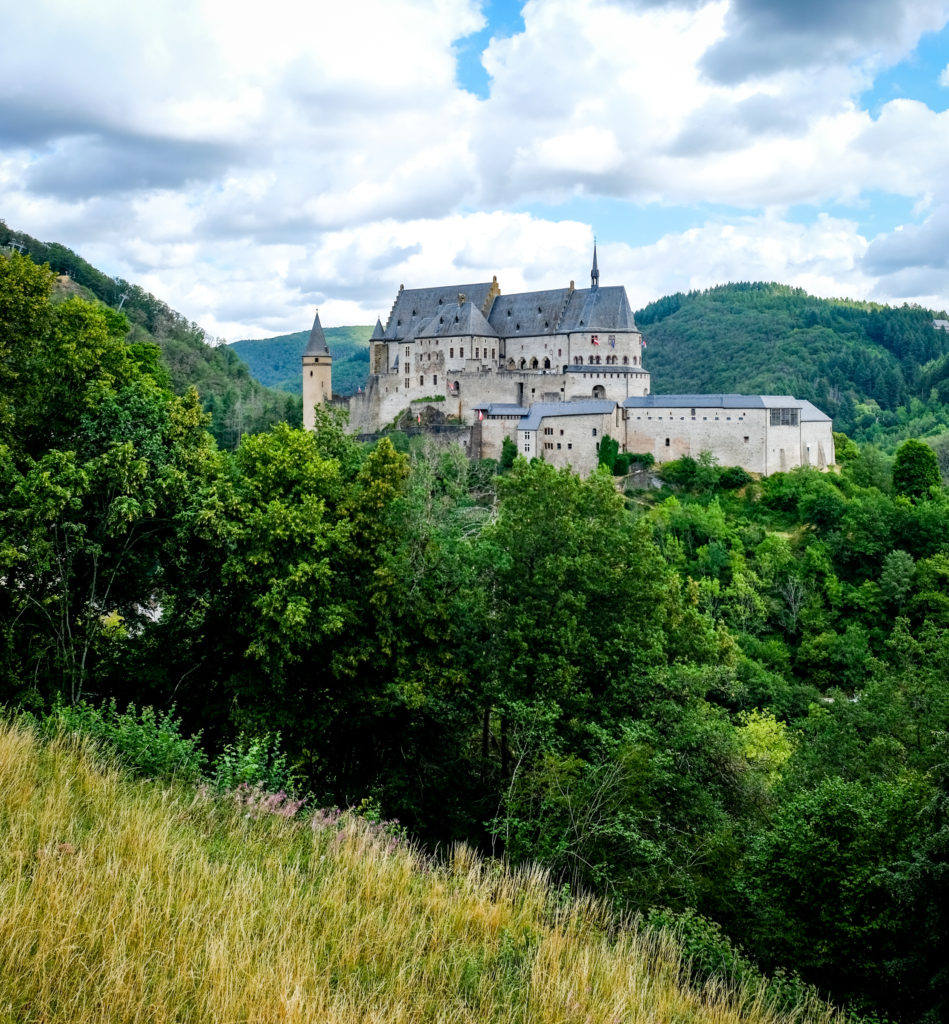
Fairytale like castle of Vianden
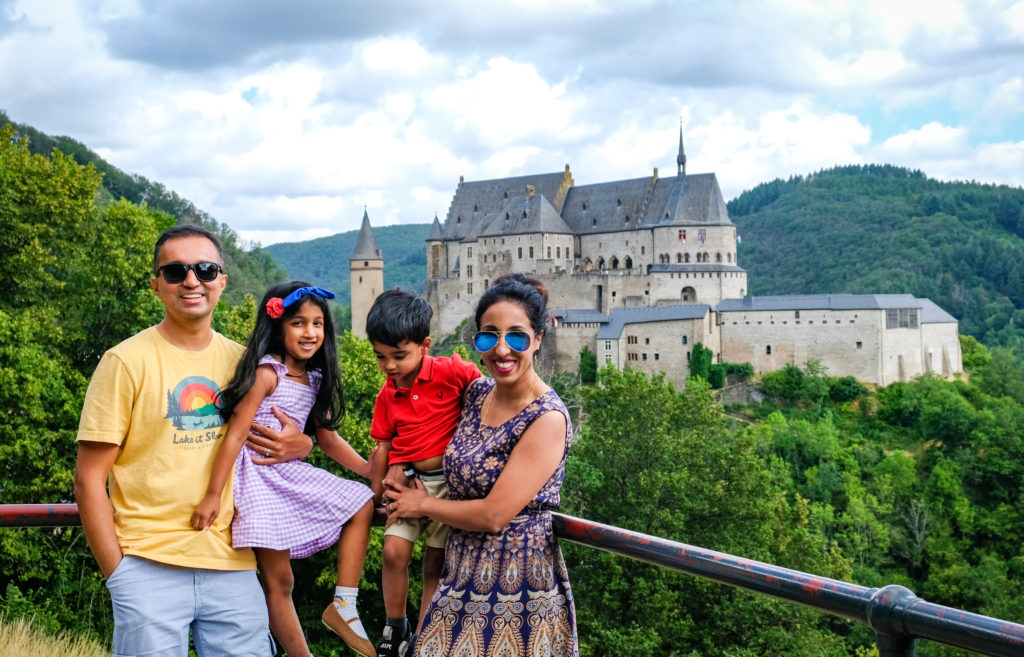
So eager to get to the castle
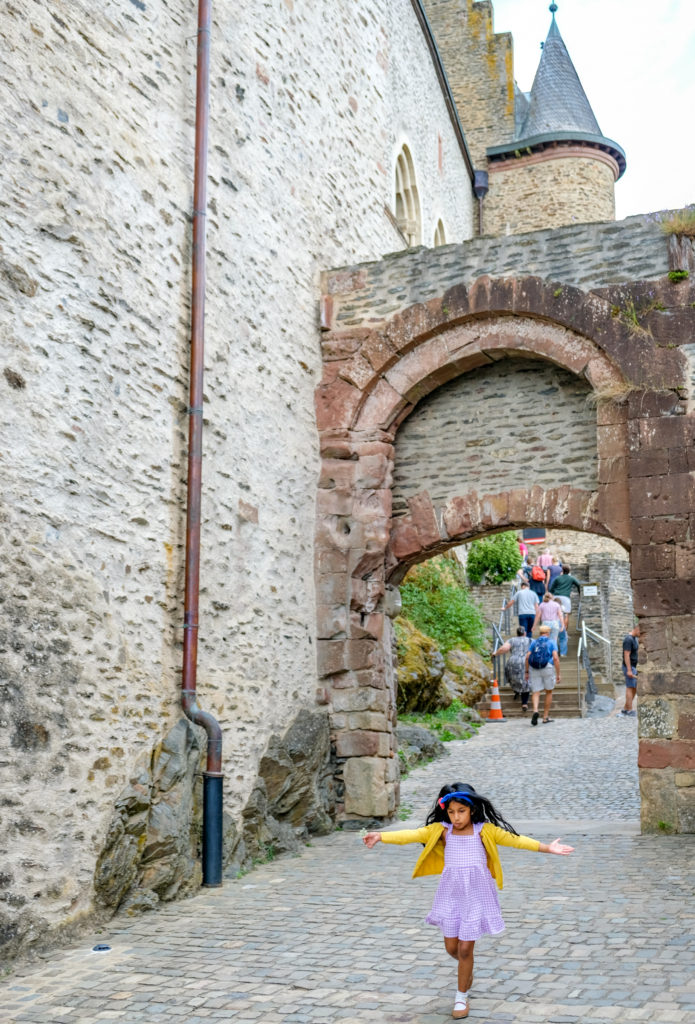
Ready to explore the castle…oops, wrong direction
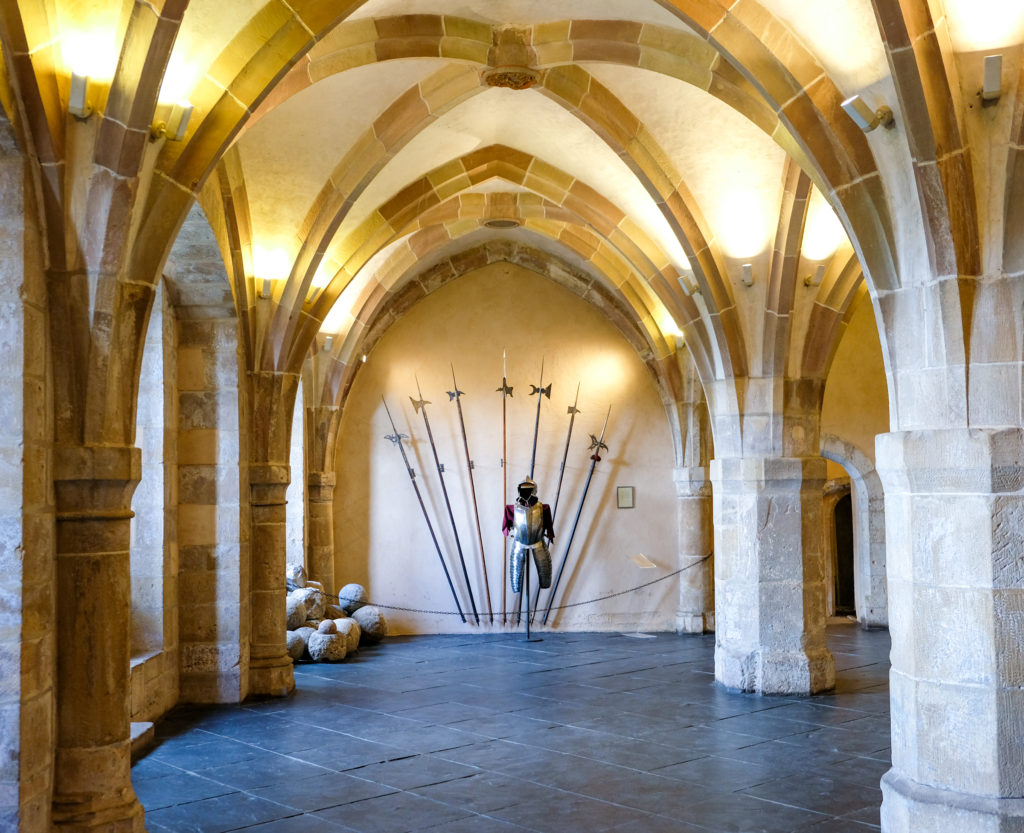
Inside the castle
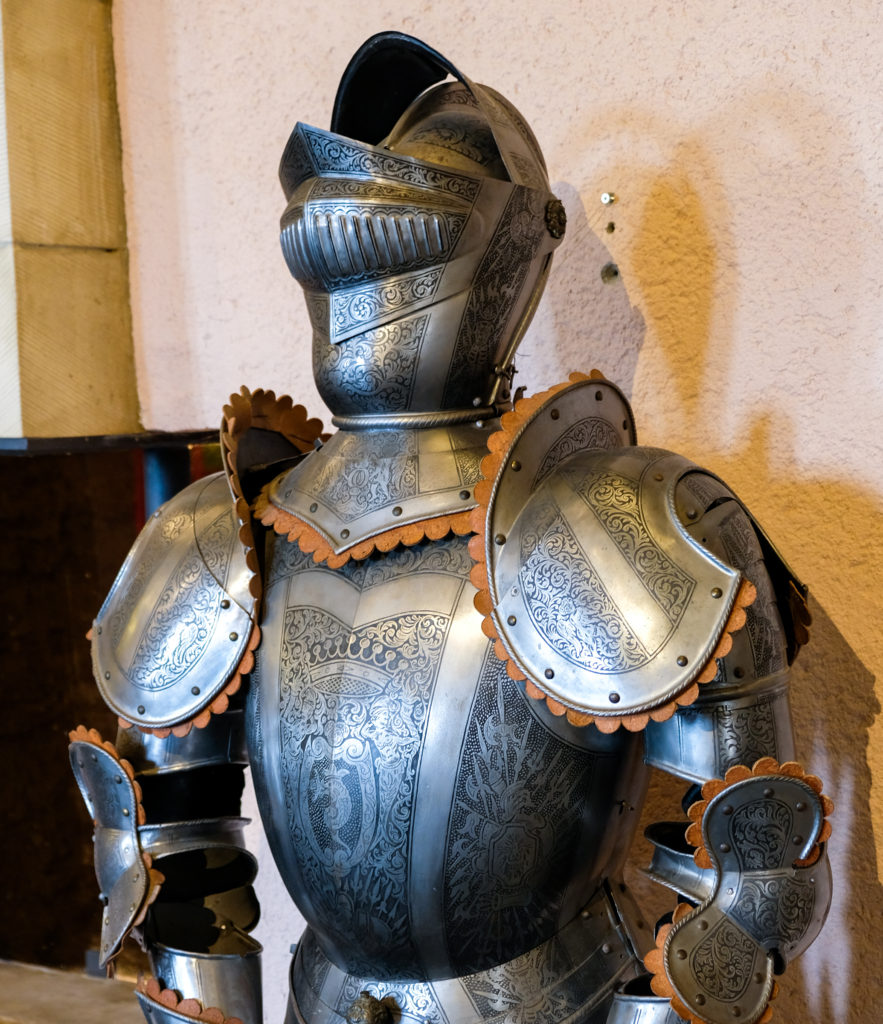
One of the many musclemen on guard
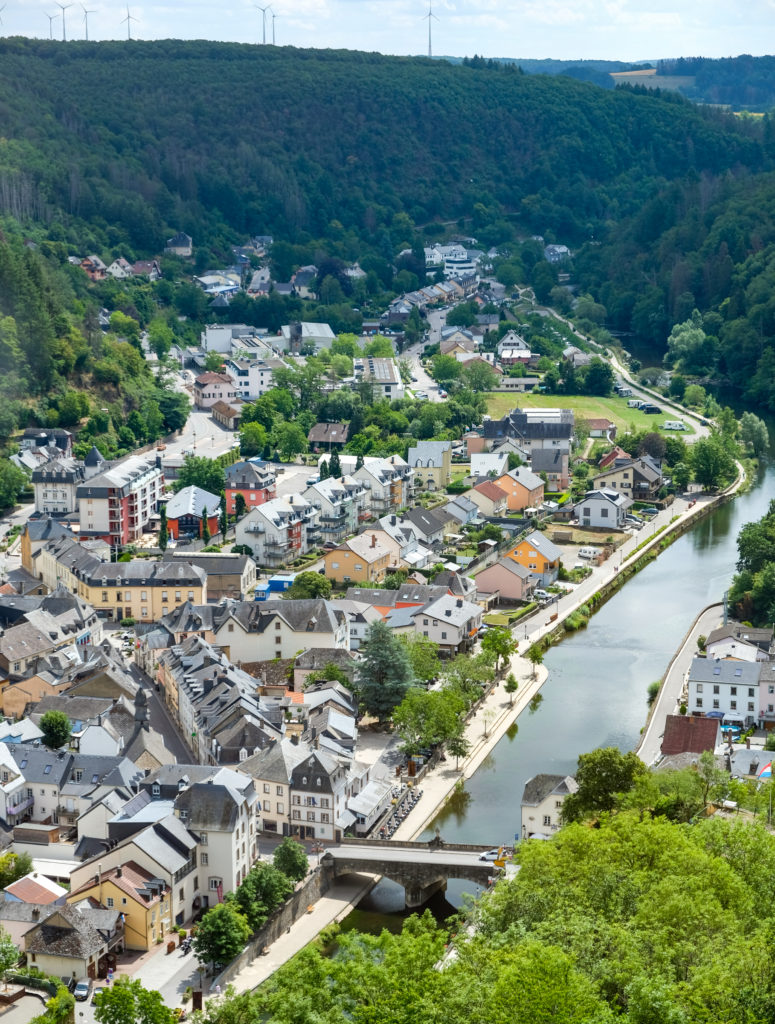
View of the town of Vianden down below
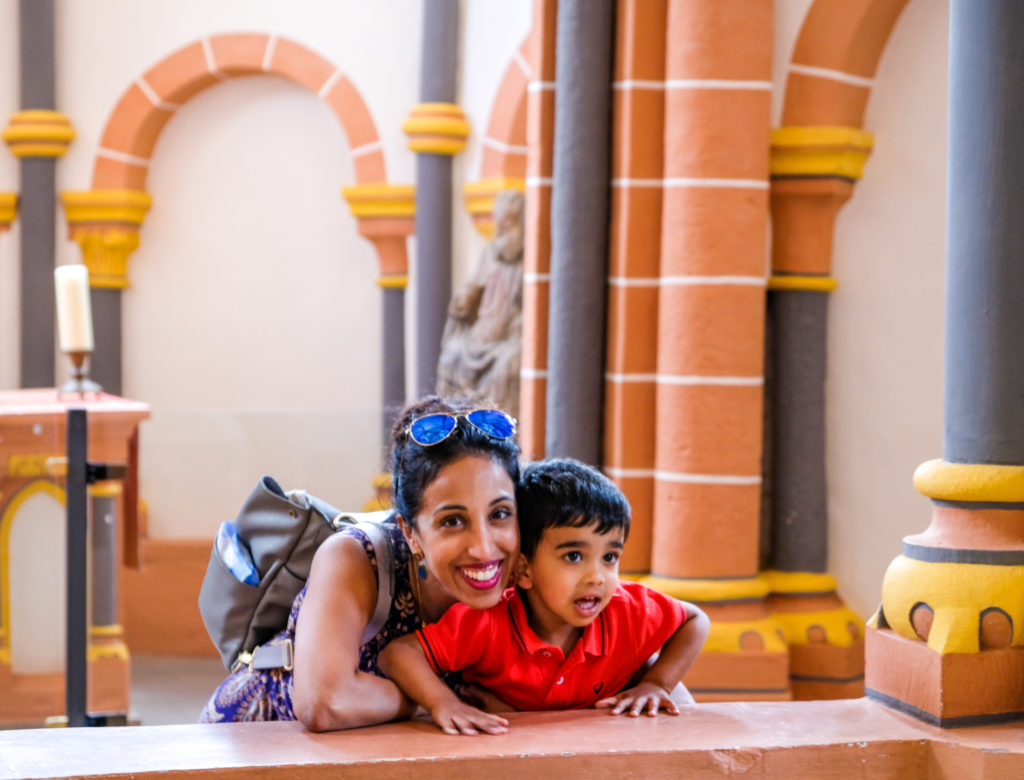
Say “Vianden!”
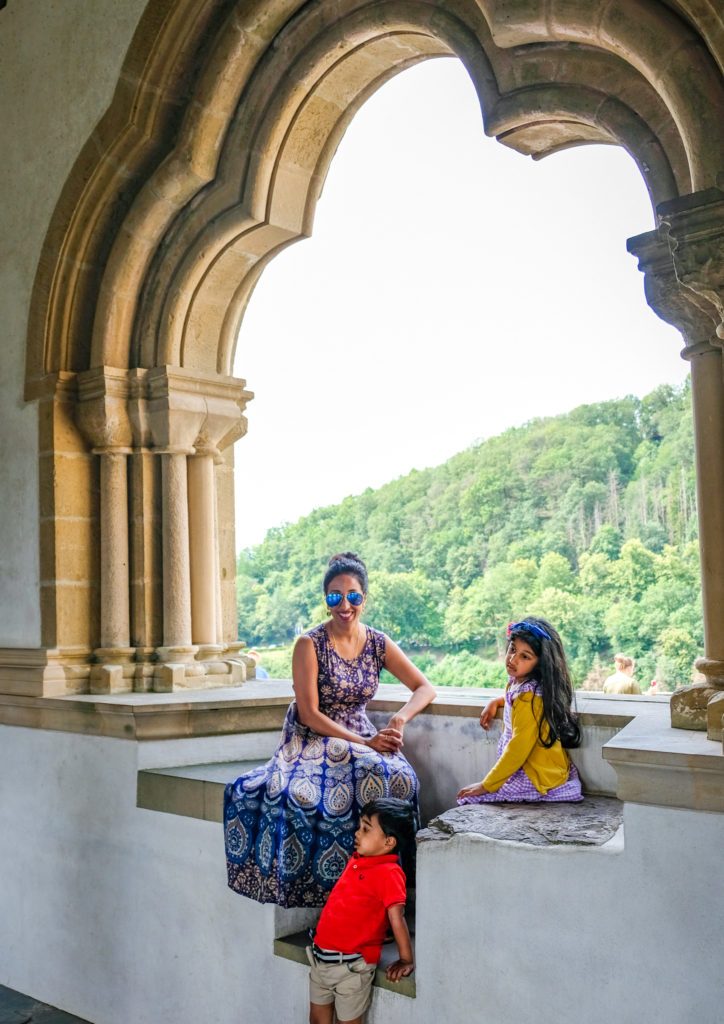
Soaring views of the surrounding hills
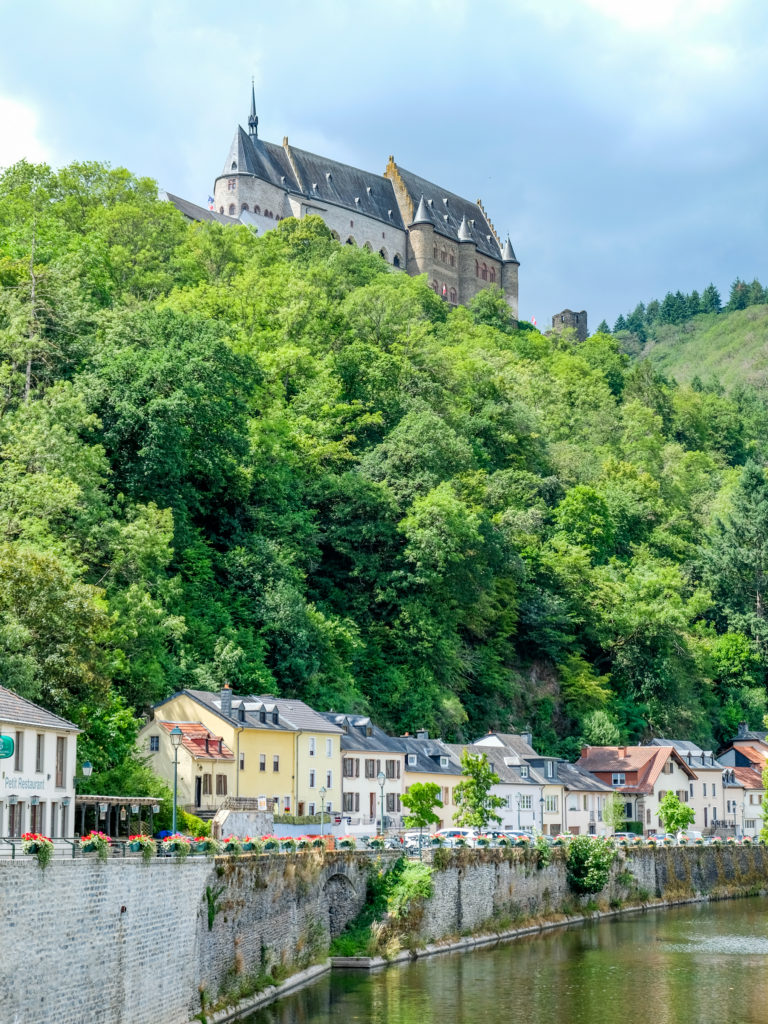
The castle from the town below
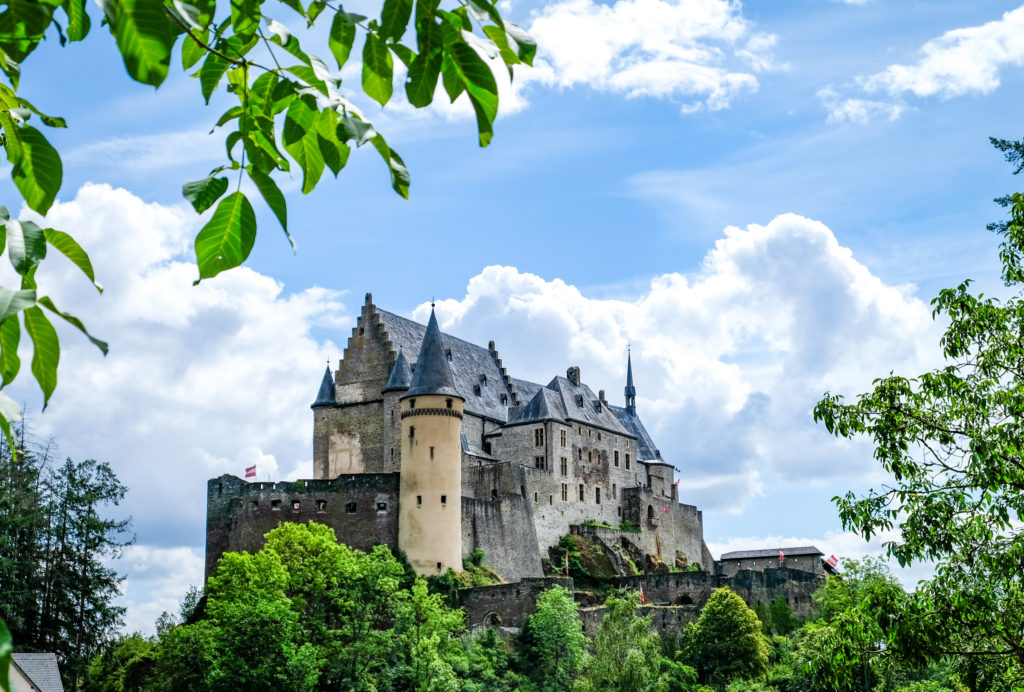
Goodbye to Vianden after a great day trip
6. Enjoy a day wine tasting in the picturesque Moselle valley
For our last day in Luxembourg we drove out east to the Moselle wine region, which is just a 25min drive out of the city center. This region which takes its name from the namesake river that runs through the valley separating Luxembourg from Germany, is the only wine growing region in the Grand Duchy.
We started at the Caves des Crémants Poll-Fabaire winery in Wormeldange, but we inadvertently ended up taking the longer scenic route there. We crossed the bridge over to the German side by mistake before making a quick u-turn, but there were no border checks since we were within the Shengen zone. The town of Shengen where the pan-European agreement bearing its name was signed is just a short ~20km drive south along the Moselle river. Our second stop was at the Caves Du Wellenstein further south, closer to Remich.
We tried the local varietal Elbling, Auxerrois, Riesling, and Gewürztraminer wines, but the highlight at both tastings was sampling the Crémant de Luxembourg sparkling wines. A few glasses of the high quality Crémant made according to the French méthode traditionelle were the perfect antidote for a sweltering summer day. The wineries even served the kiddos tastings of alcohol-free grape juice so they could be part of the experience! The Crémants were astonishingly affordable as well and we ended up getting a couple of bottles even though our luggage space was limited – wine always finds a way. We wrapped up our Moselle wine region tour with a carousel ride for the kids, and an hour long boat cruise on the river taking in the views of vineyards on both the Luxembourg and Germany sides.
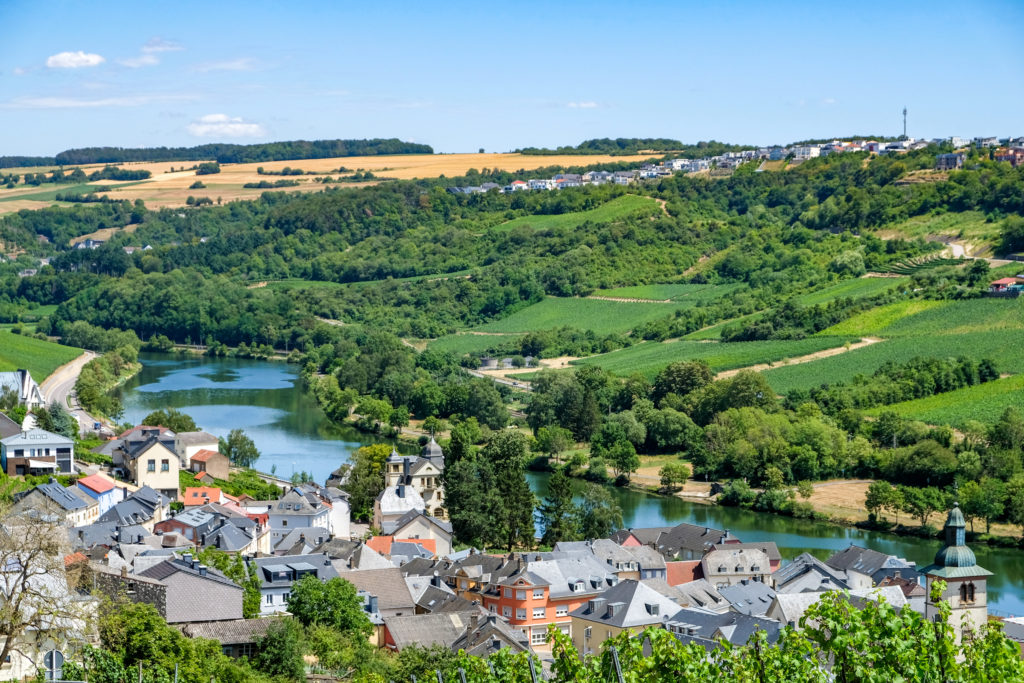
The picturesque Moselle valley: Luxembourg on this side and Germany on the further side of the river
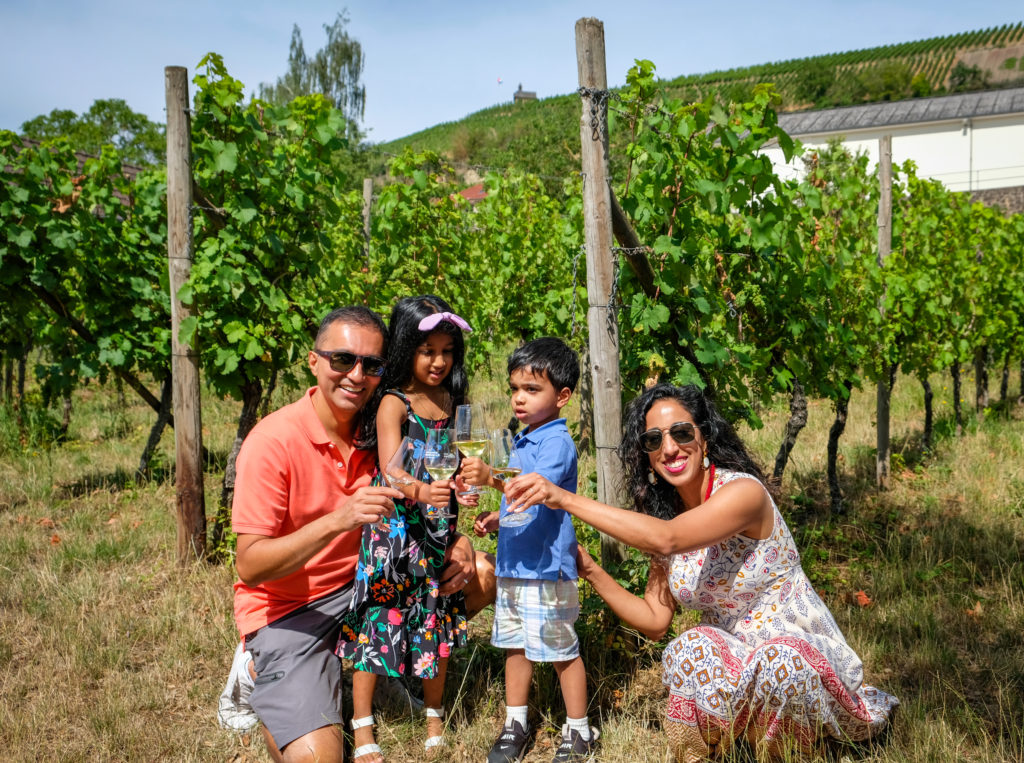
Cheers to some delicious Cremant and yummy grape juice
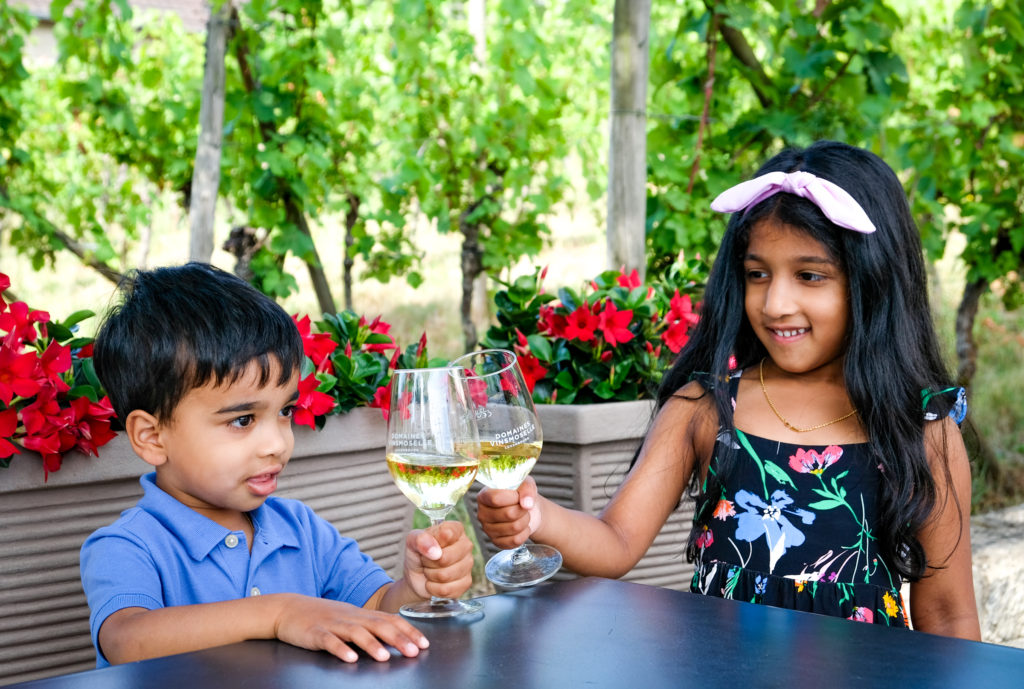
Kiddos loved getting in on the tasting action with their juice
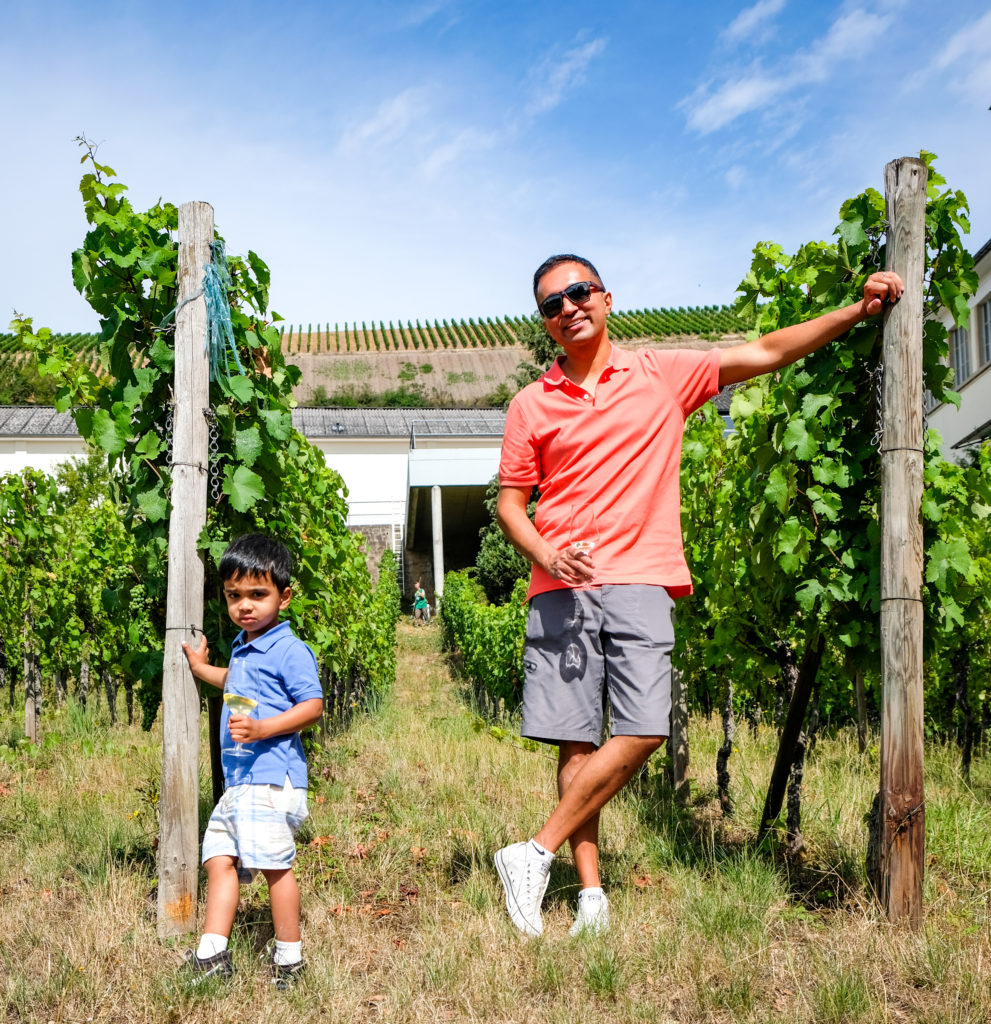
Spot the differences
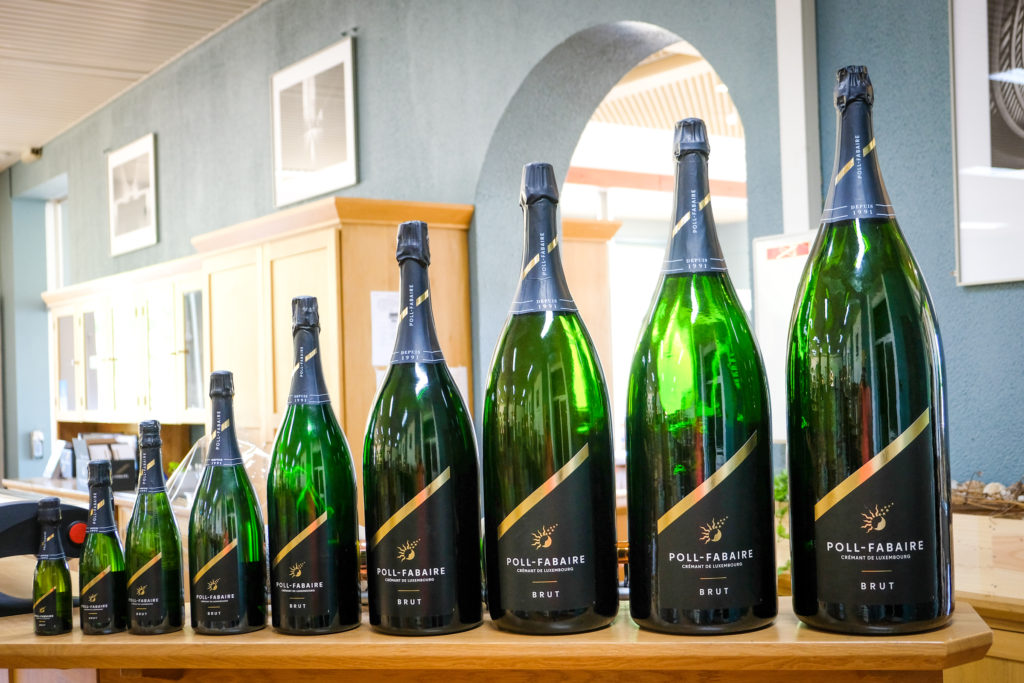
Cremant for every level of thirst
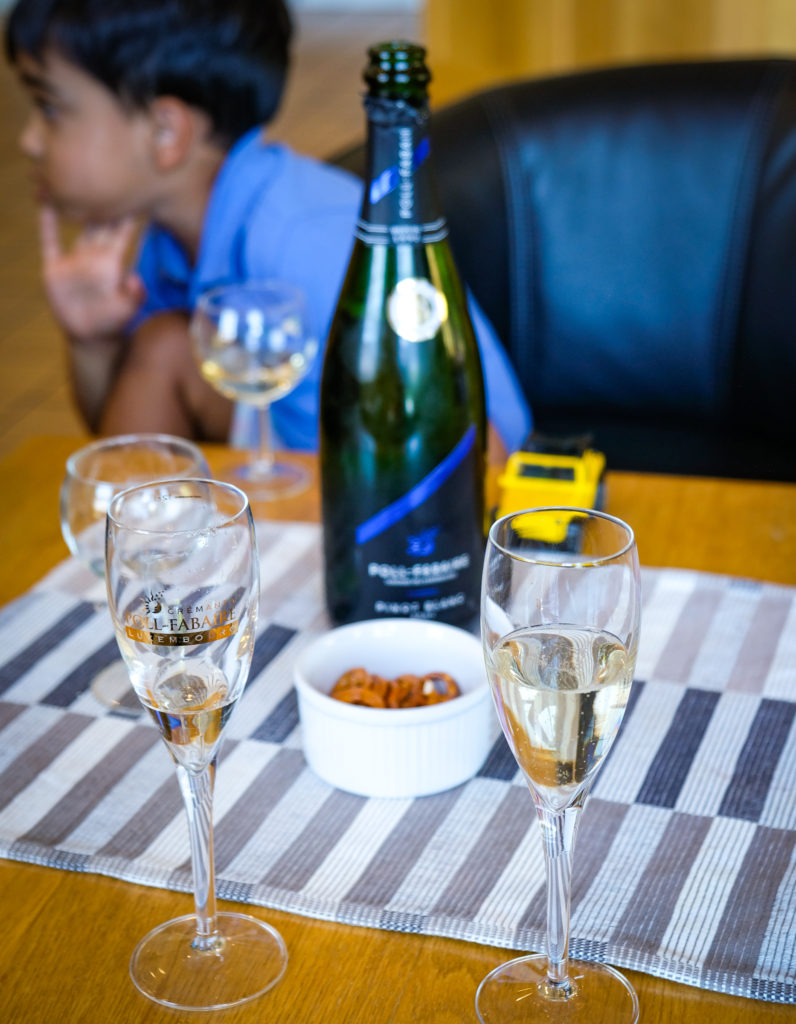
The highlight of the tasting – Cremant made with 100% Chardonnay grapes
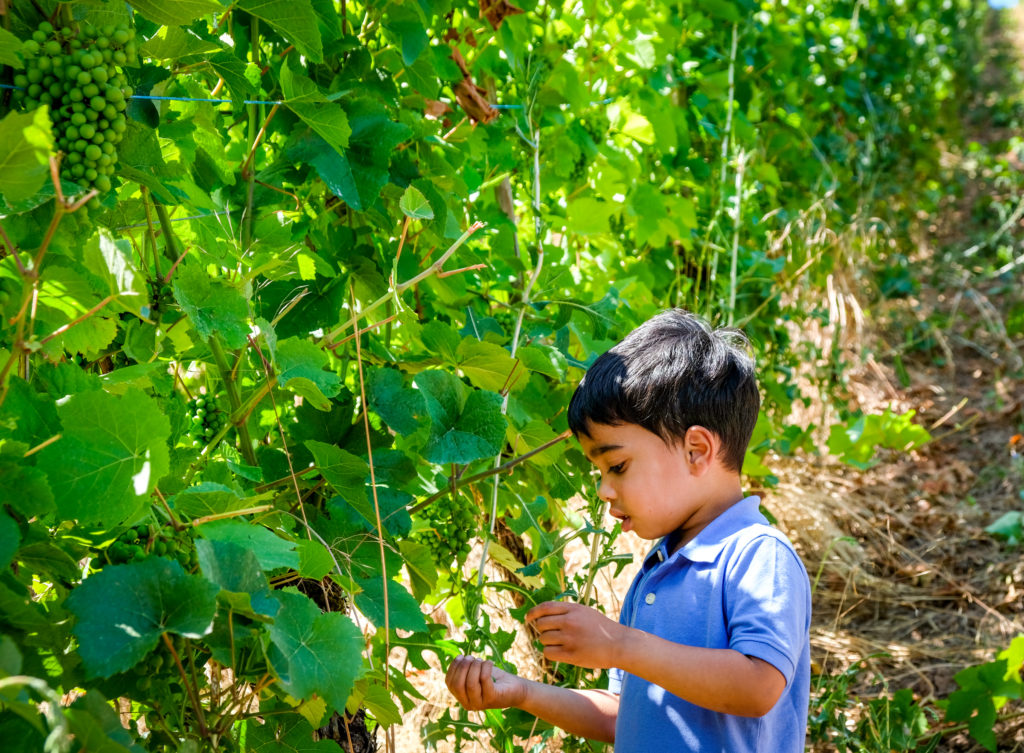
Inspecting readiness for this season’s harvest
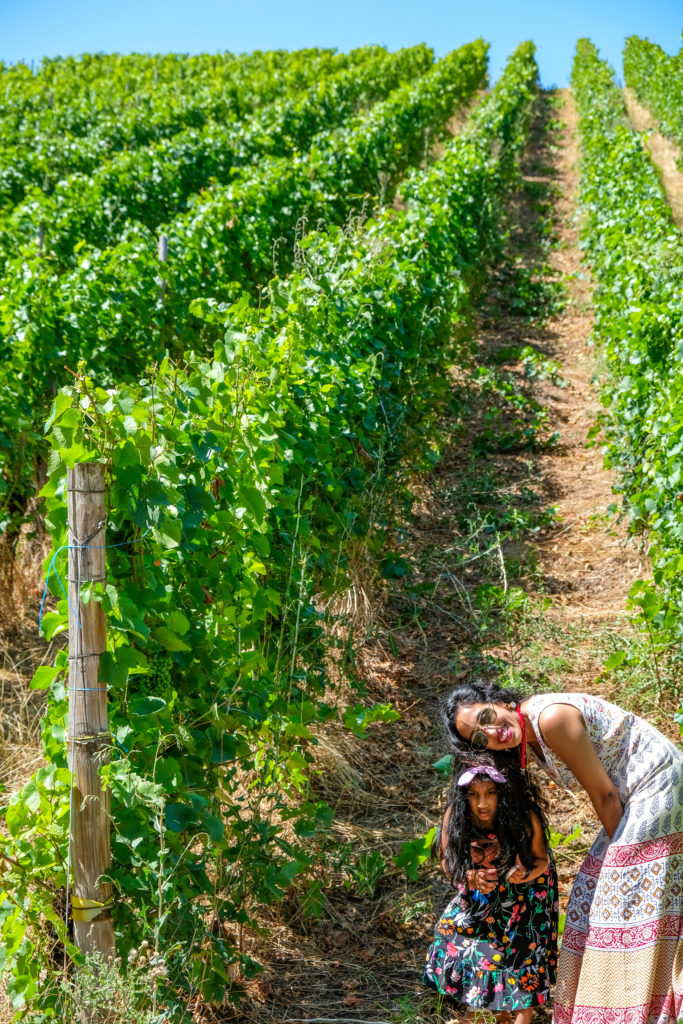
Vines all along the hills
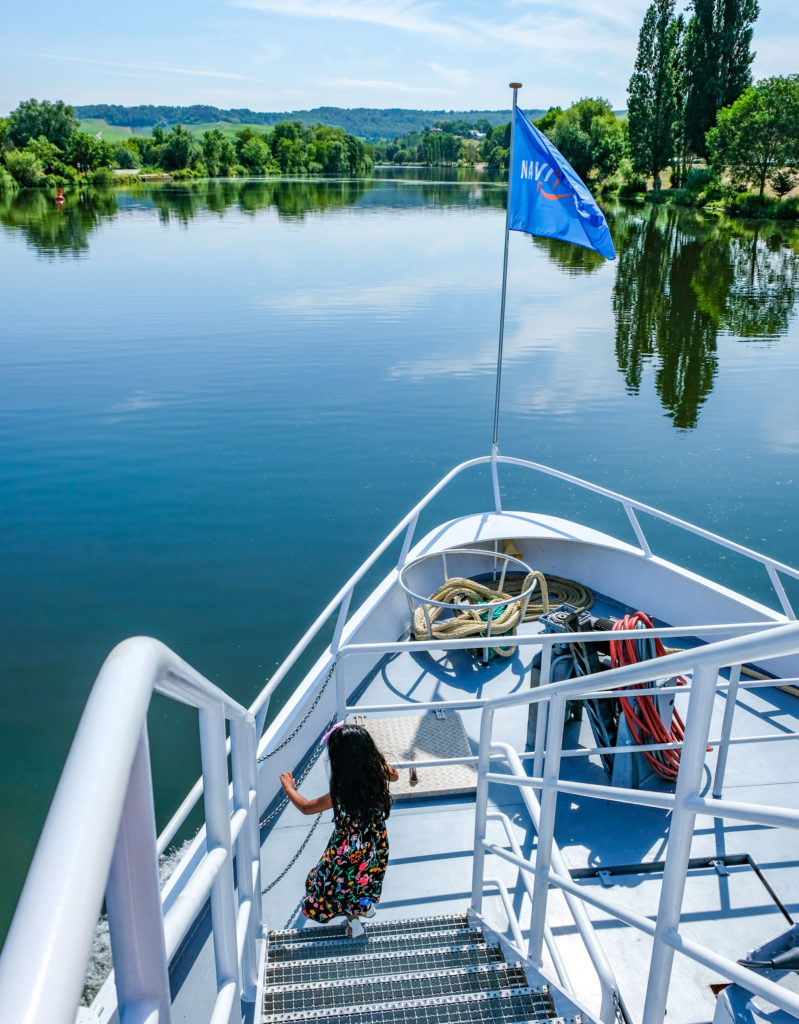
Boat cruise on the Moselle river
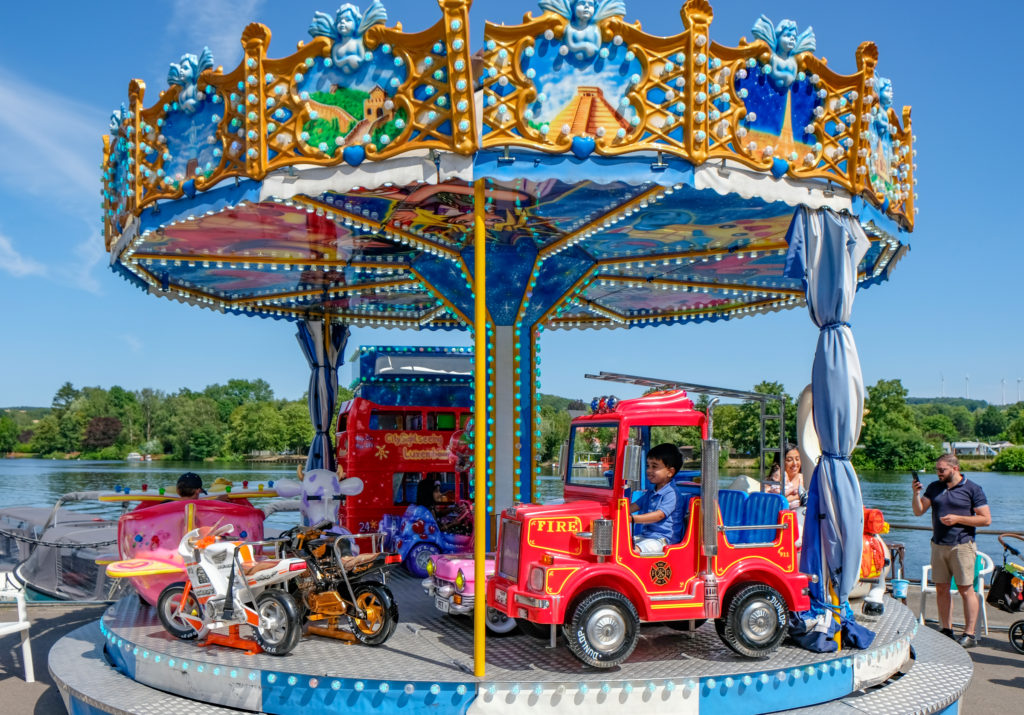
Carousel time to round out the day
Eats & Drinks
During out stay in Luxembourg, these are some of the delectable meals and treats we enjoyed:
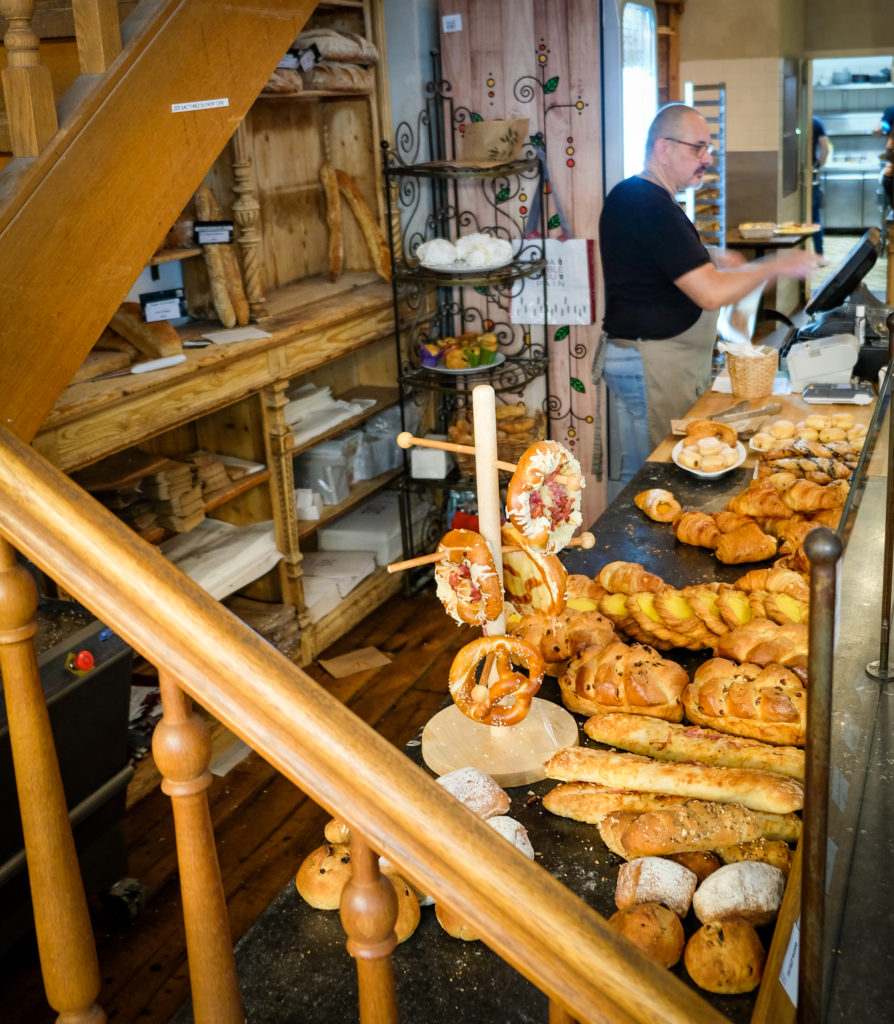
We started most days with breakfast at La Table Du Pain with freshly made pastries
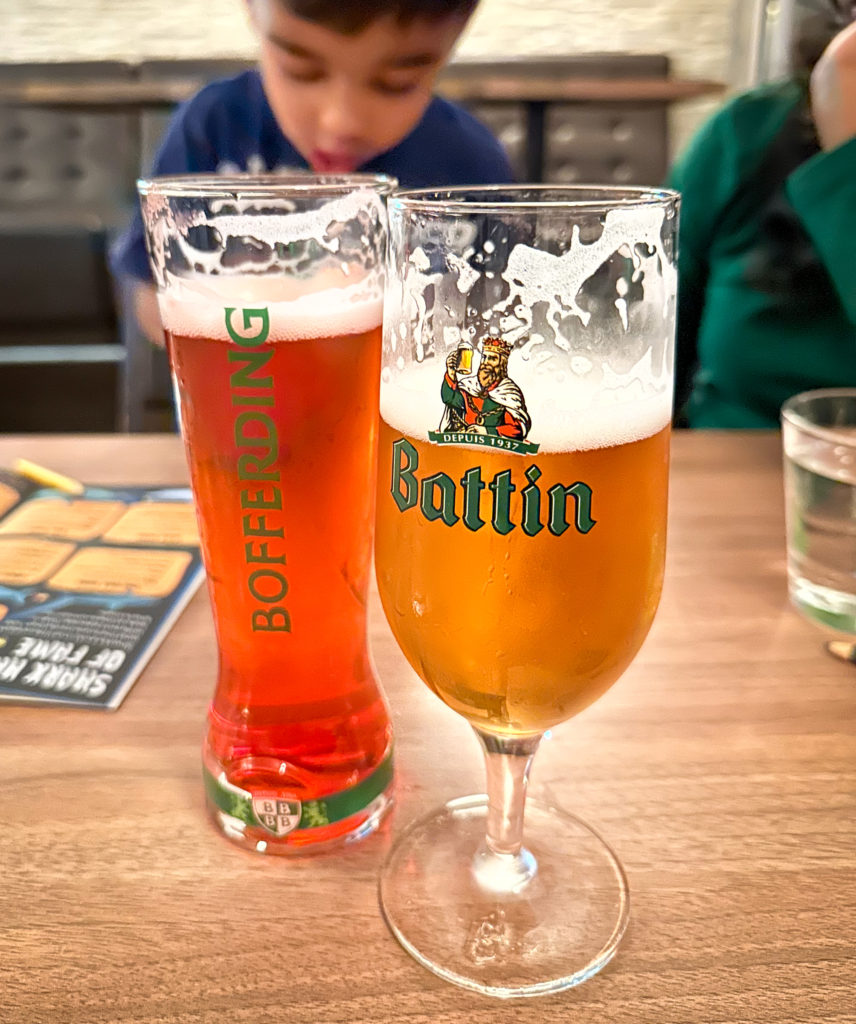
Make sure to sample these 2 local Luxembourg brews: Bofferdin & Battin
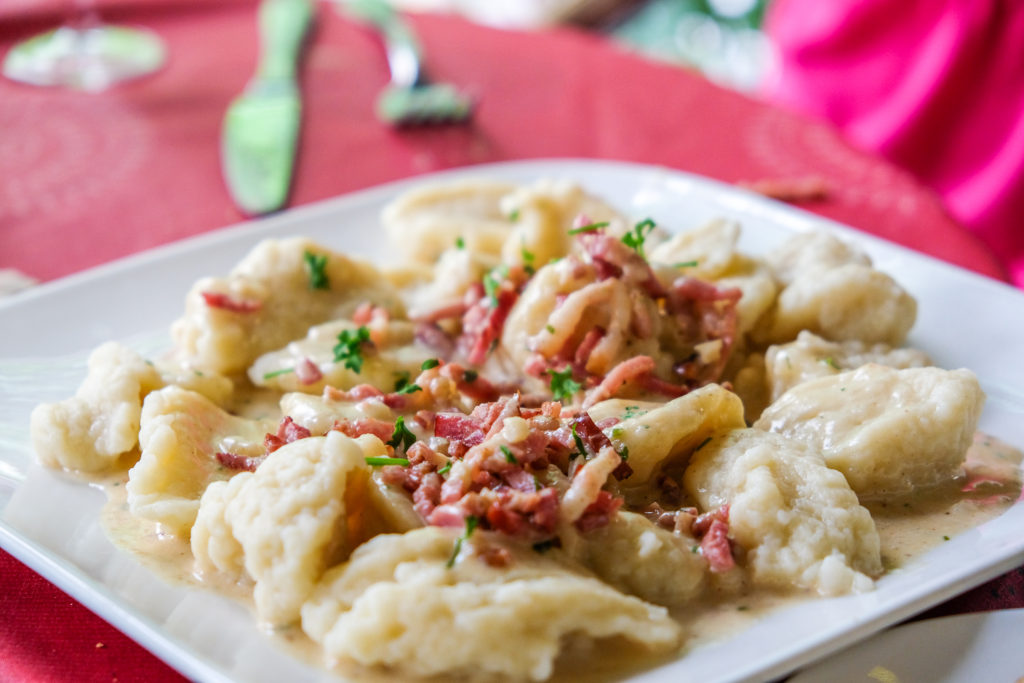
Riddelen – a form of Luxembourgish dumplings at Bosso in the Grund
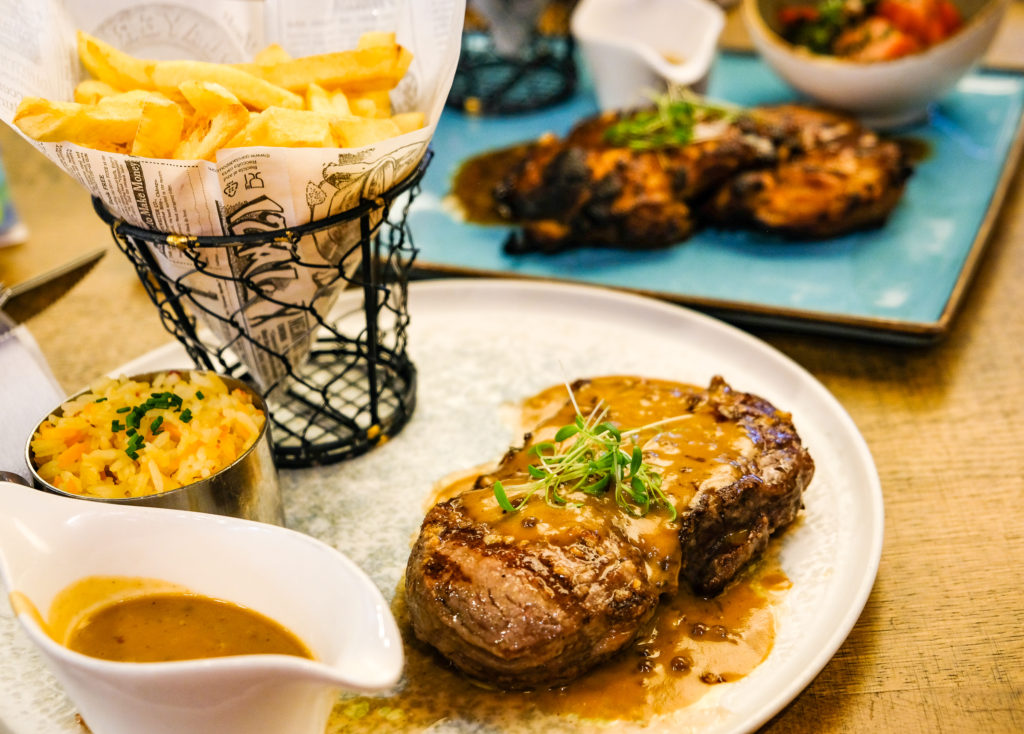
Head to Piri Piri Portuguese for lunch in the suburbs near the university
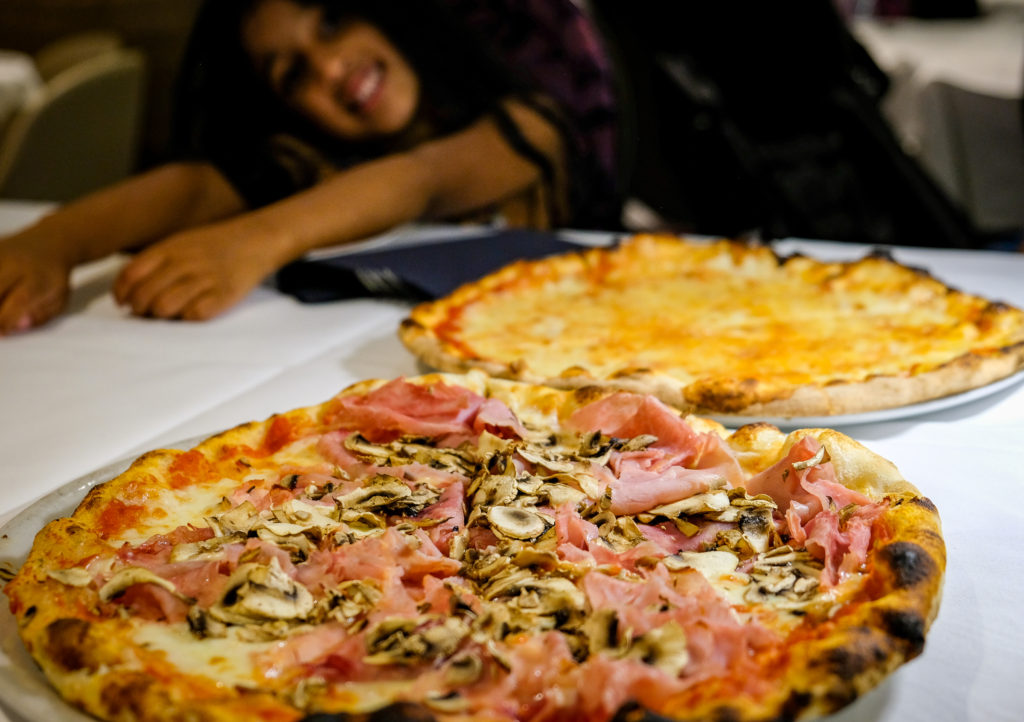
Get your pizza fix at Porta Nova
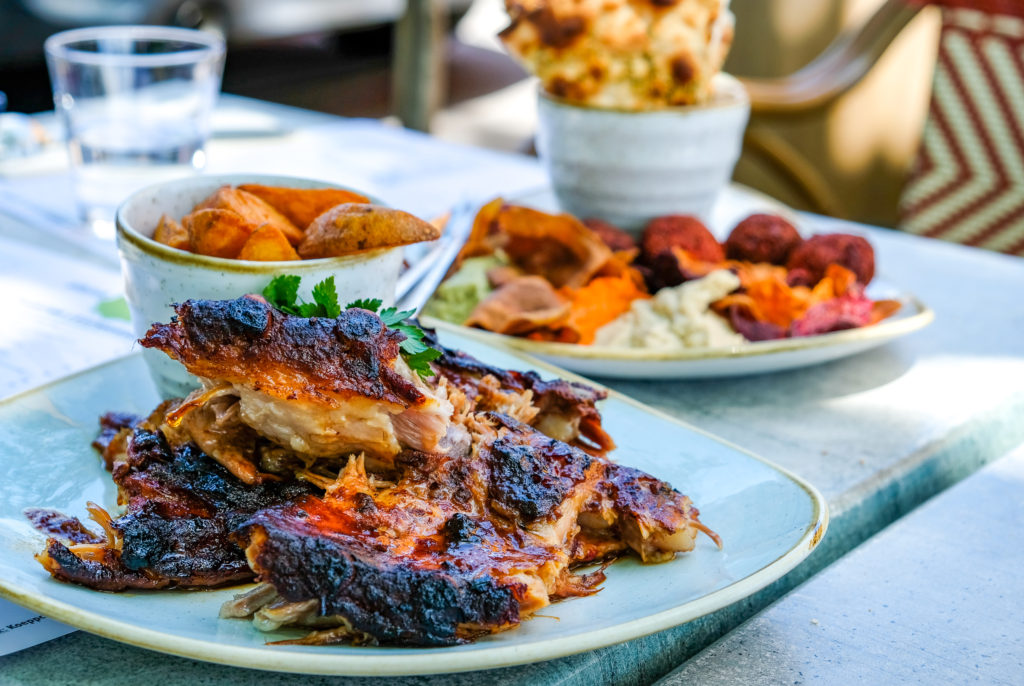
Lunch at Braserrie Koeppchen in Remich was the perfect pit stop between wine tastings
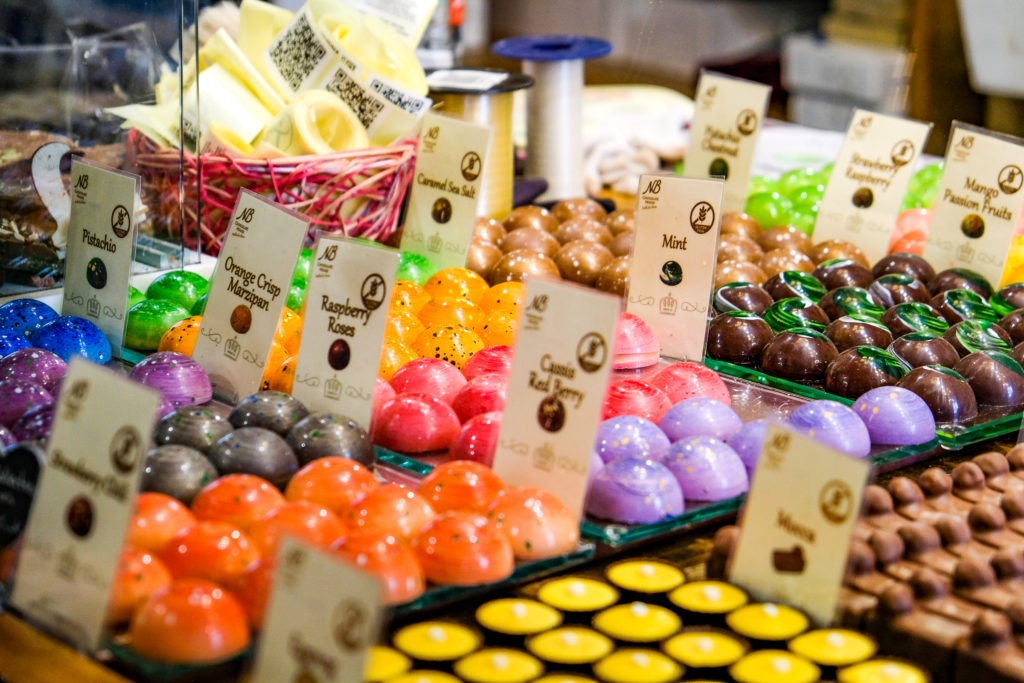
Stop at the Chocolate house opposite the Grand Ducal Palace for decadent artery clogging desserts
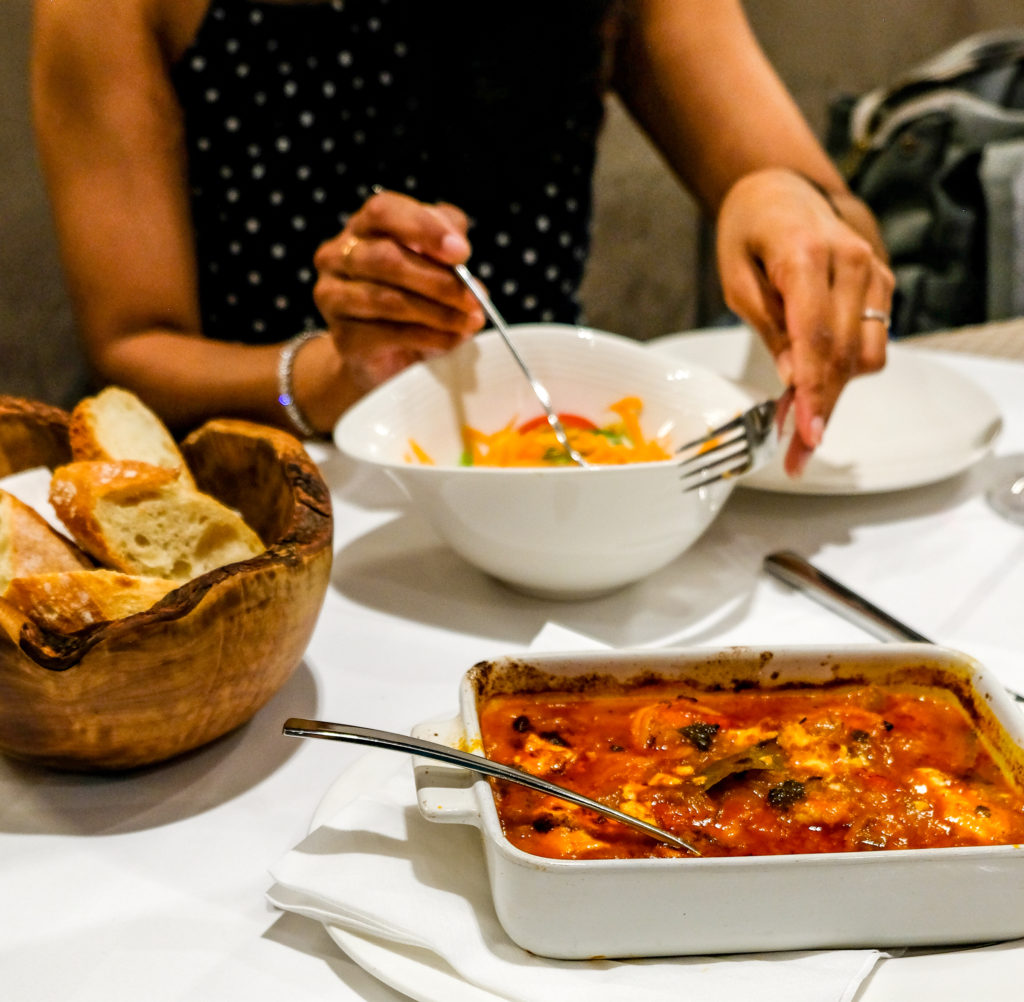
Best meal of our trip was at Athena Greek restaurant, the Shrimp Haridas Sanganaki pictured here was scrumptious

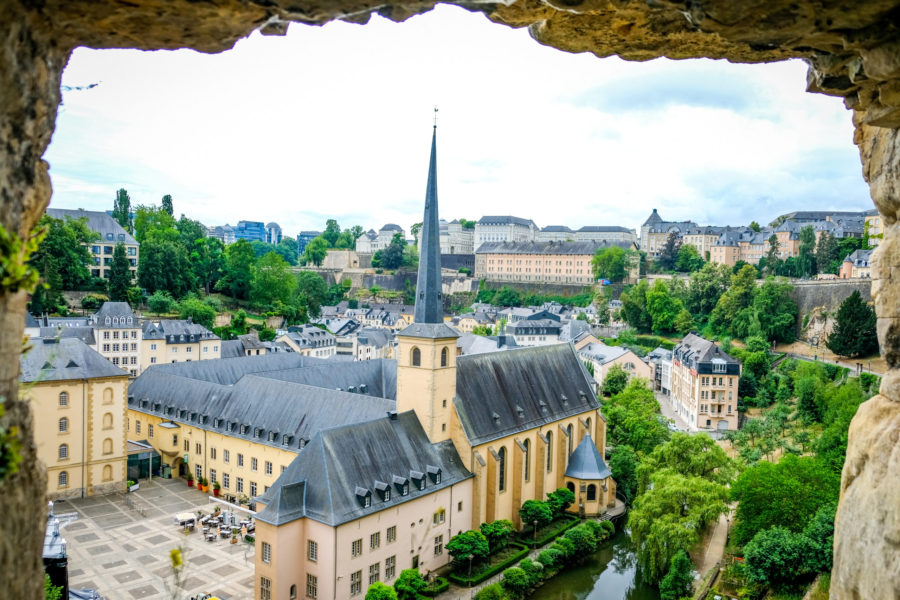
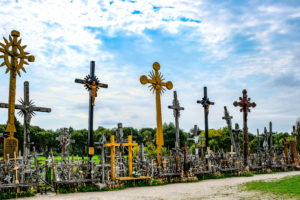
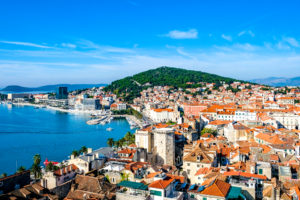
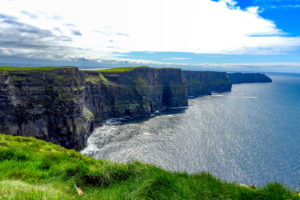




Leave a Reply
Please share your comments below!